Sacred Valley
Complete
Our journey was to see Machu Picchu and until the lady at Belmond discussed this trip with me I wasn't even aware of someplace called "the sacred valley". If I would have heard of it I probably would have thought it was sacred in biblical terms ... nope! Click here to read all about the Sacred Valley.
Anyway, it was very impressive. We saw ancient ruins, alpacas, llamas, vicunas, ladies making blankets..all kinds of cool stuff.
We flew from Lima (sea level) straight to Cusco (3,399 meters above sea level) and then drove to the Sacred Valley which is about 3,000 meters above sea level. Apparently going straight from Lima to Cusco and then staying in Cusco causes a lot of people altitude sickness and that's why we visited Cusco at the end of our week here in Southern Peru. Starting in the Sacred Valley then going to Machu Picchu and then back to Cusco is apparently the way all the tours do it to try to avoid client altitude sickness. It worked well for us although I think the altitude at Machu Picchu had a bit to do with my climbing difficulty.
You can see how high we are by the glaciers on the mountain in the distance.

One our first stops after Cusco was a farm where they raise llamas, alpacas, vicunas, guanacos, etc. - I have to admit I can't tell one from another. The interesting thing is they're all descended from camels - or camels are descended from them - one or the other...
So here's a few of them and it's hard to believe the beautiful things the can make from these mangey buggers.
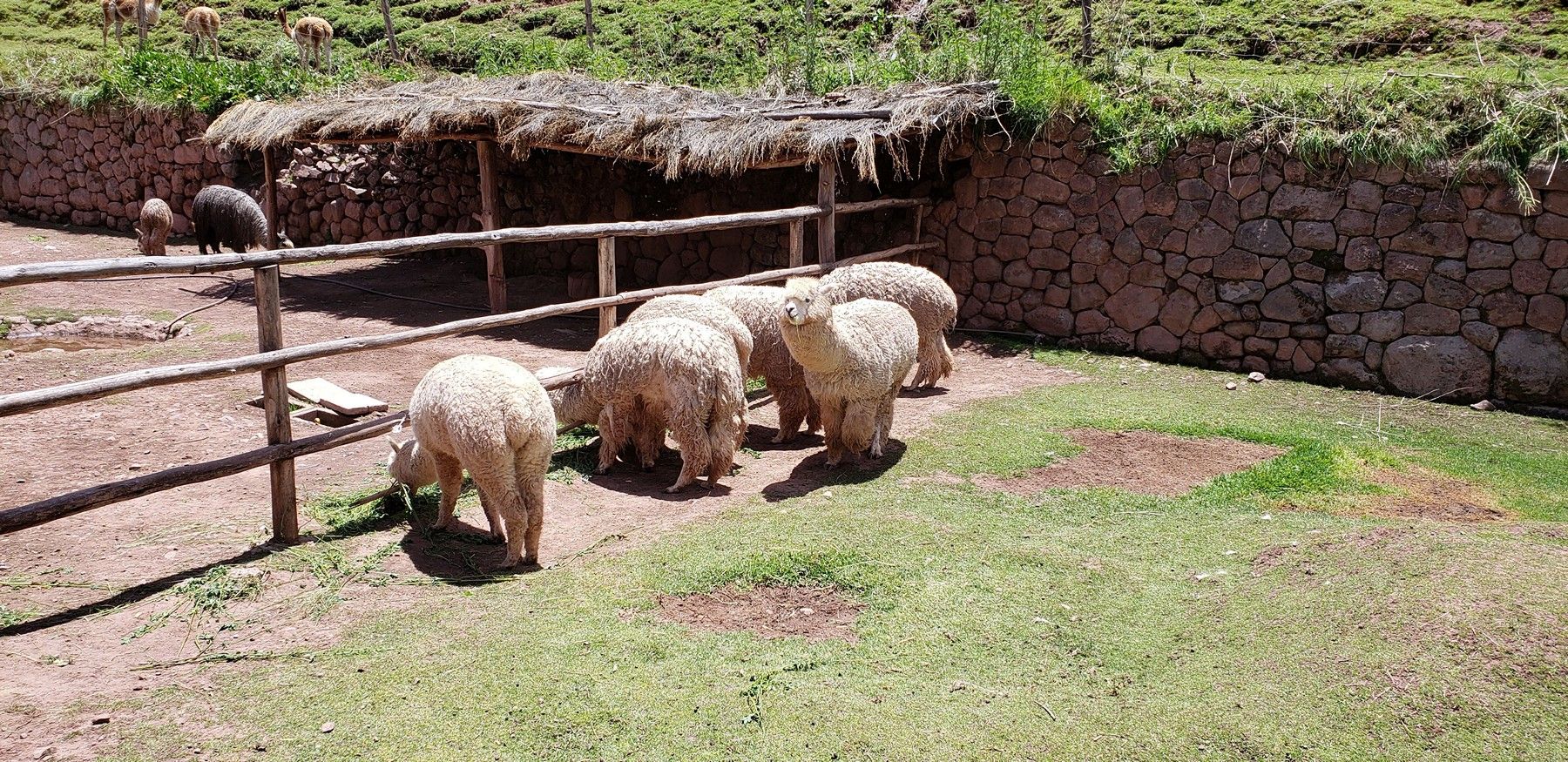
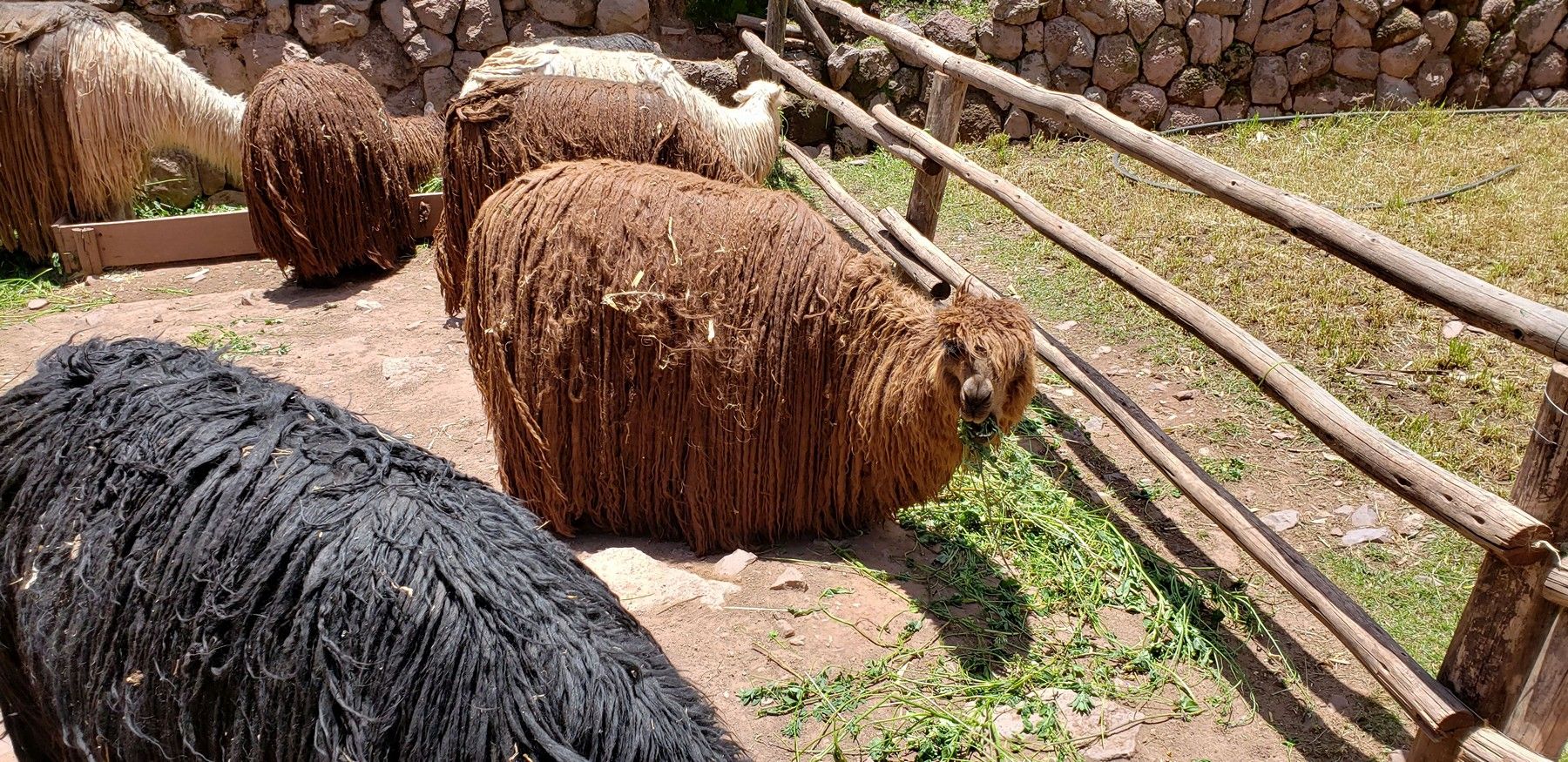
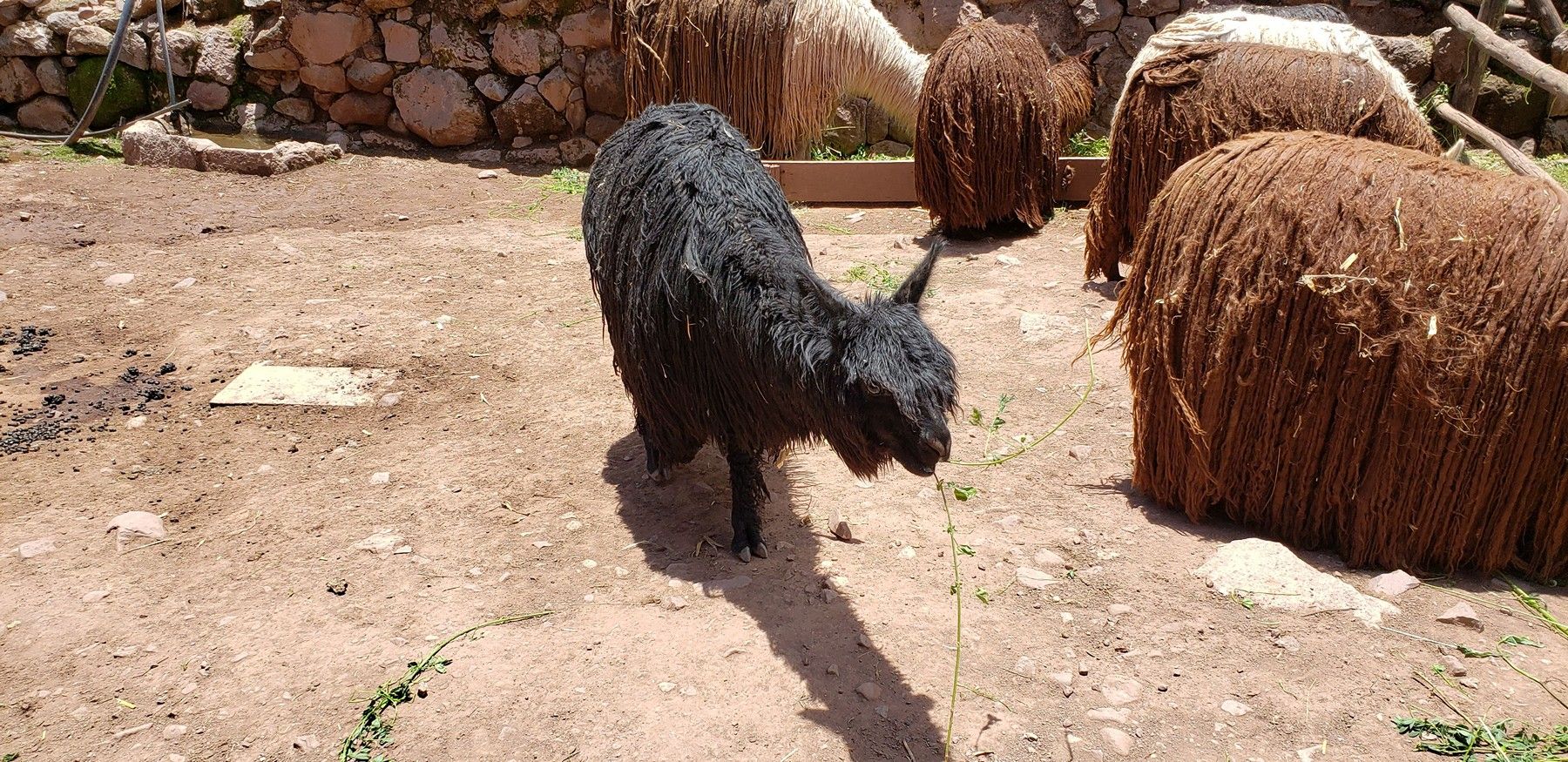
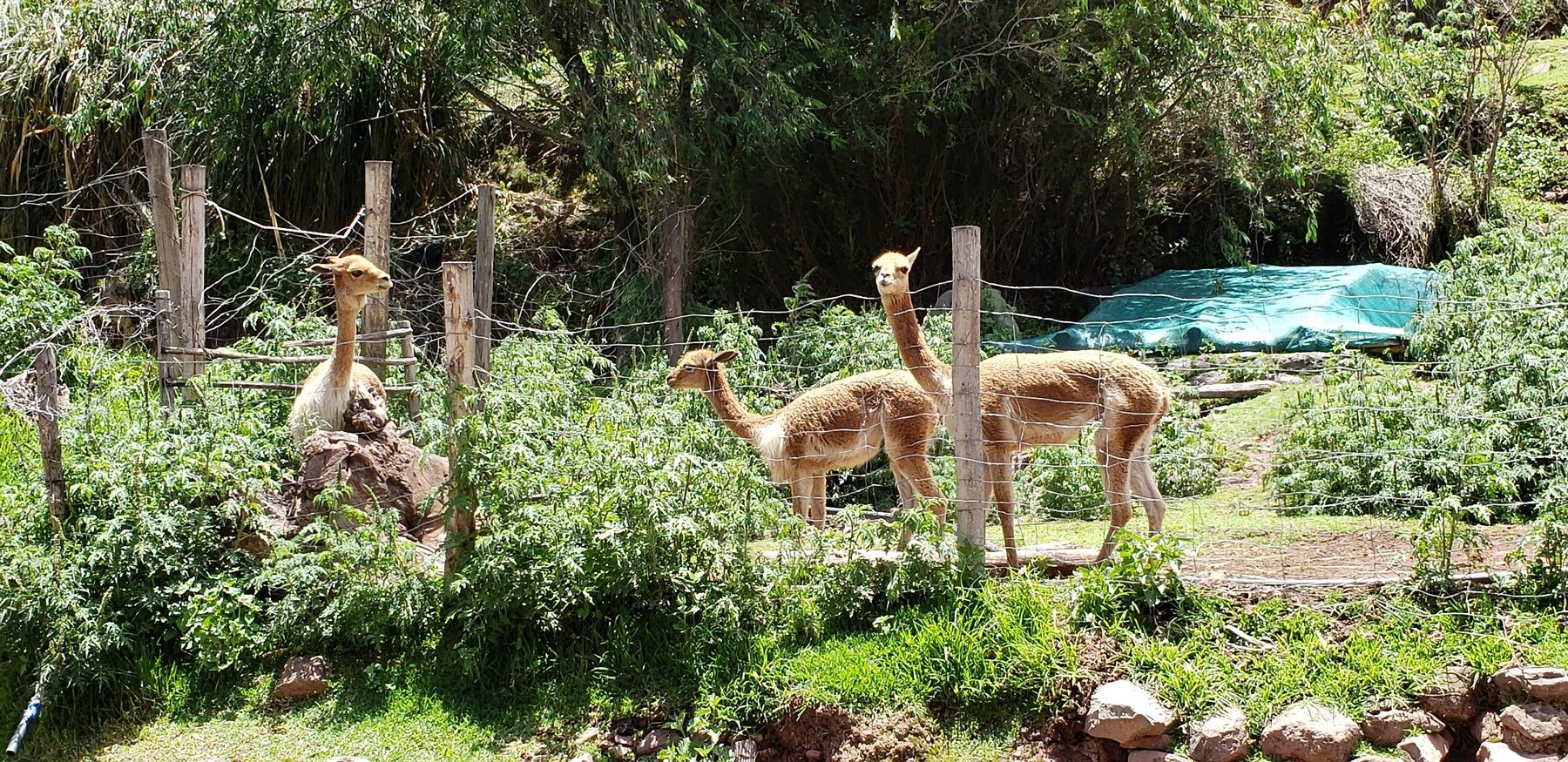
At this same farm they had this display of some of the different corn that's grown in Peru.
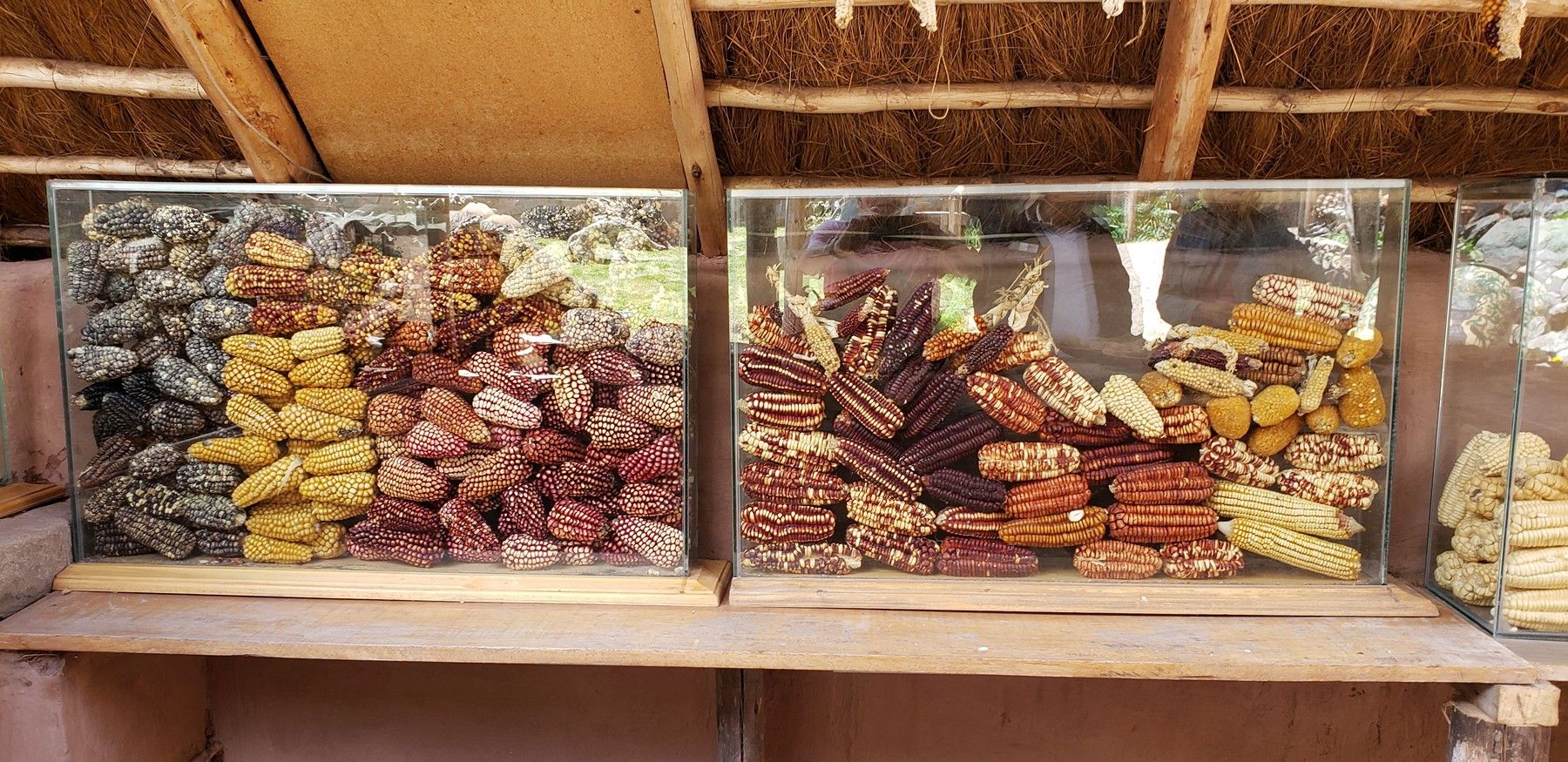
This little gal was knitting something out of the fur she got from one of the critters.
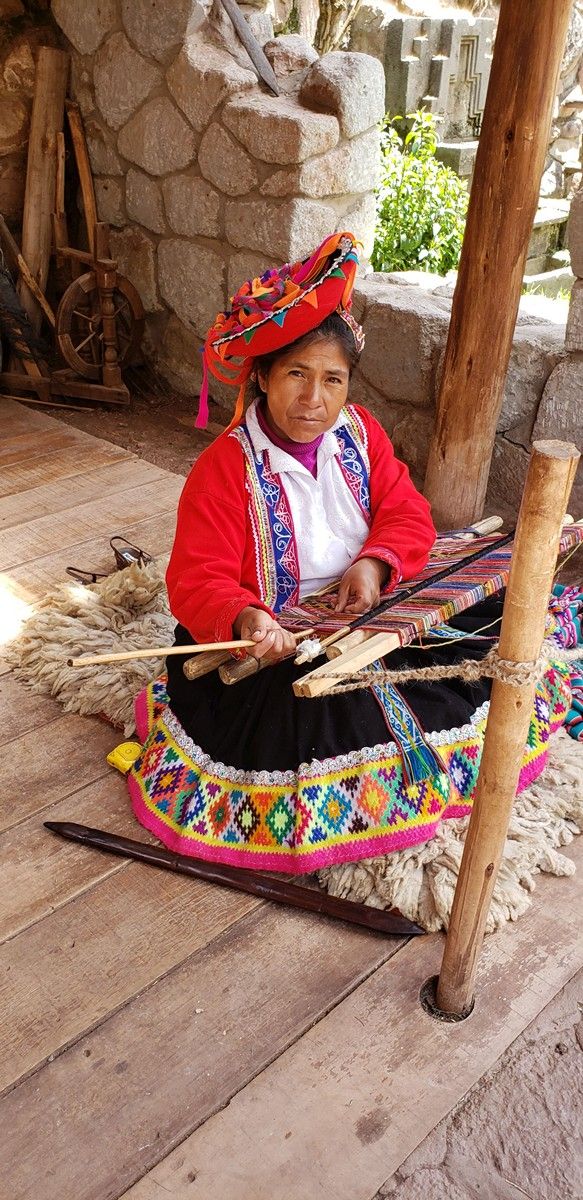
And there was a display of the tools that, until recently, Peruvian farmers used to work their land. Pretty stone age if you ask me.

What's interesting here is the terracing on the hillsides. The terraces were built by Incas hundreds of years ago...possibly a thousand years ago. They're no longer used for farming tho'.
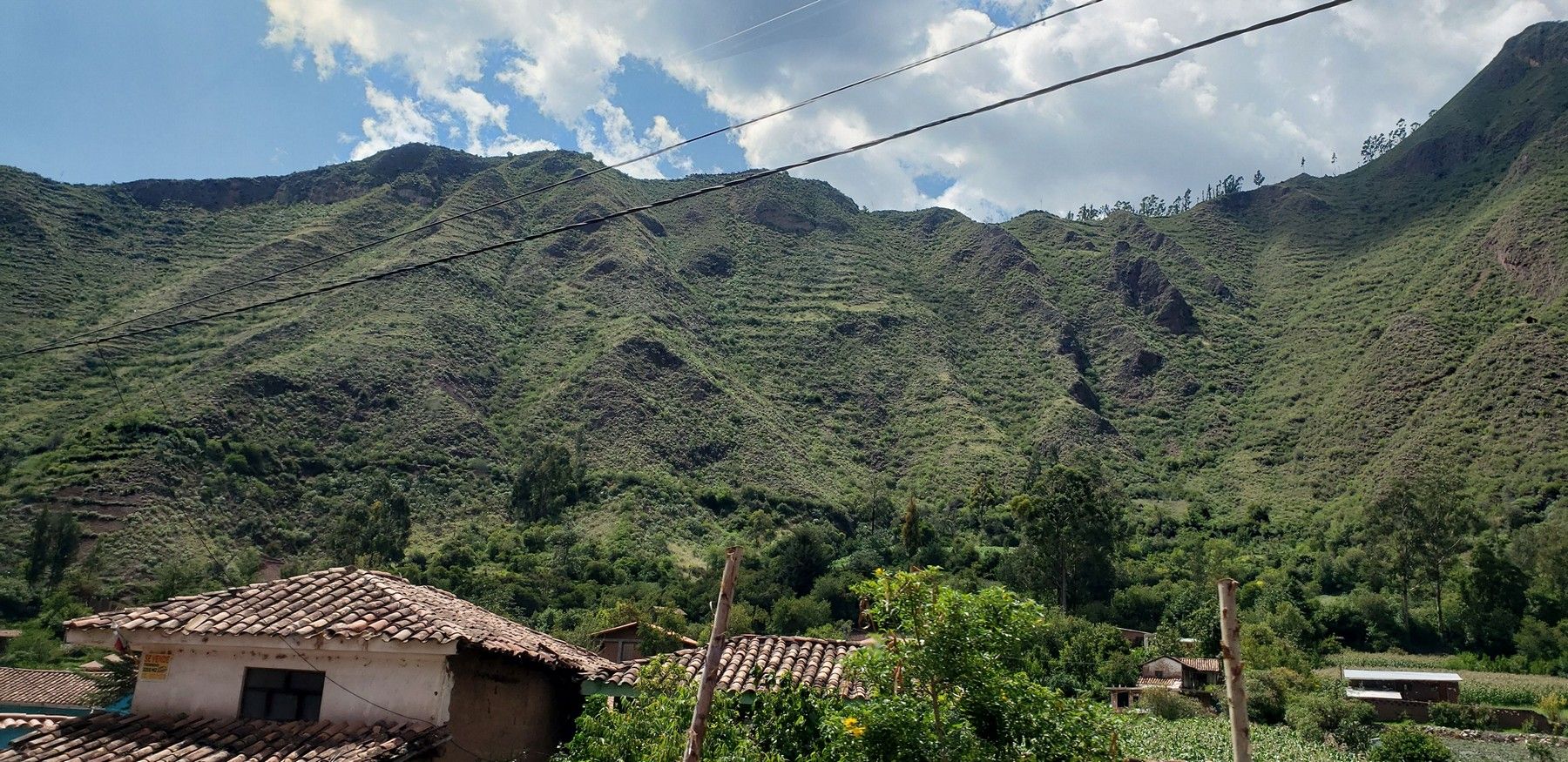
But these terraces in the valley, also built by Incas, are still used. Can you imagine the work required to collect the rocks, build the terraces, fill them with earth...unreal.
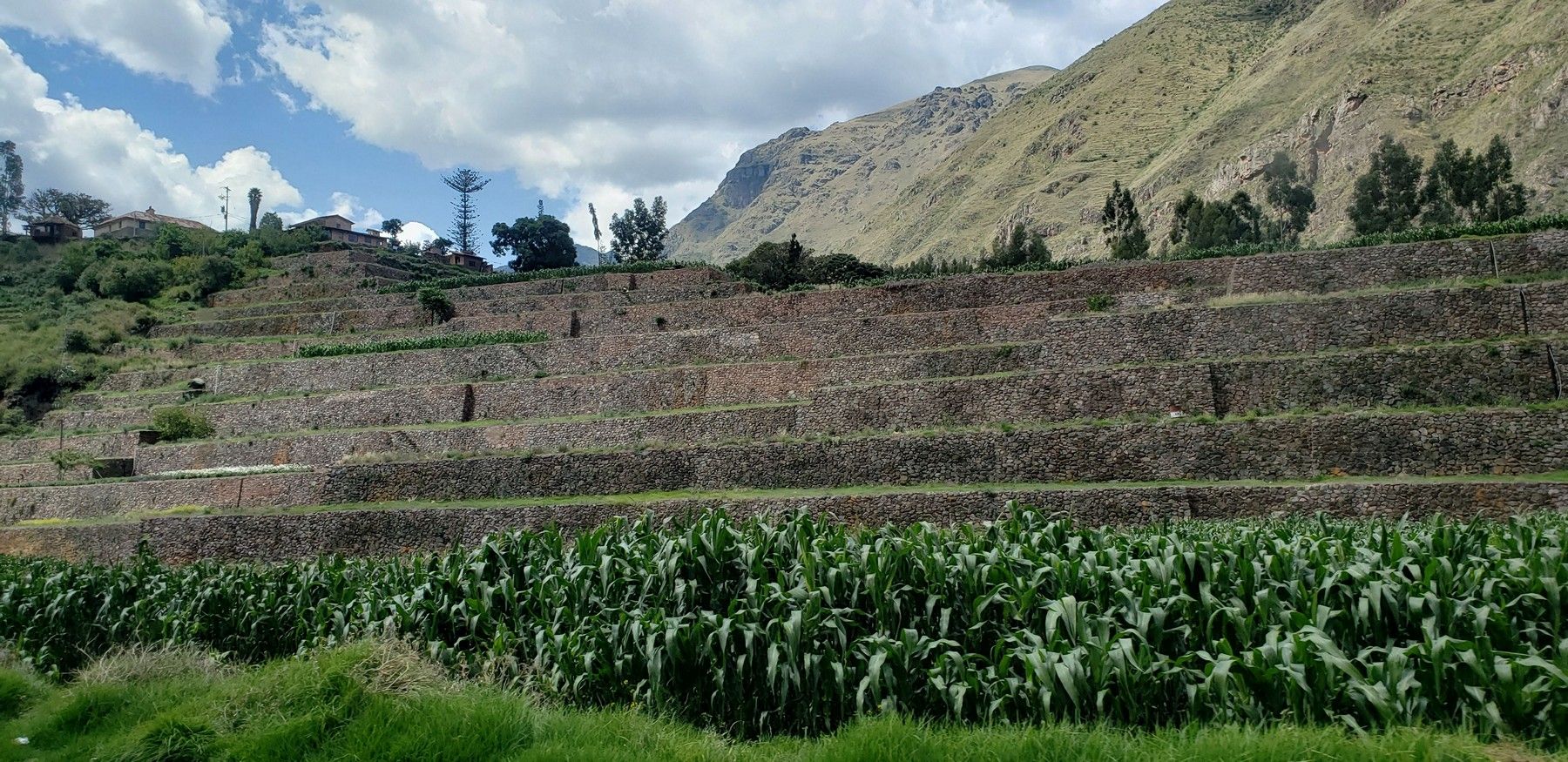
Mid-day our guide took us to a market in the town of Pisac. These young gals are not posing with their llamas and lambs for free...THEY WANT MONEY!!!
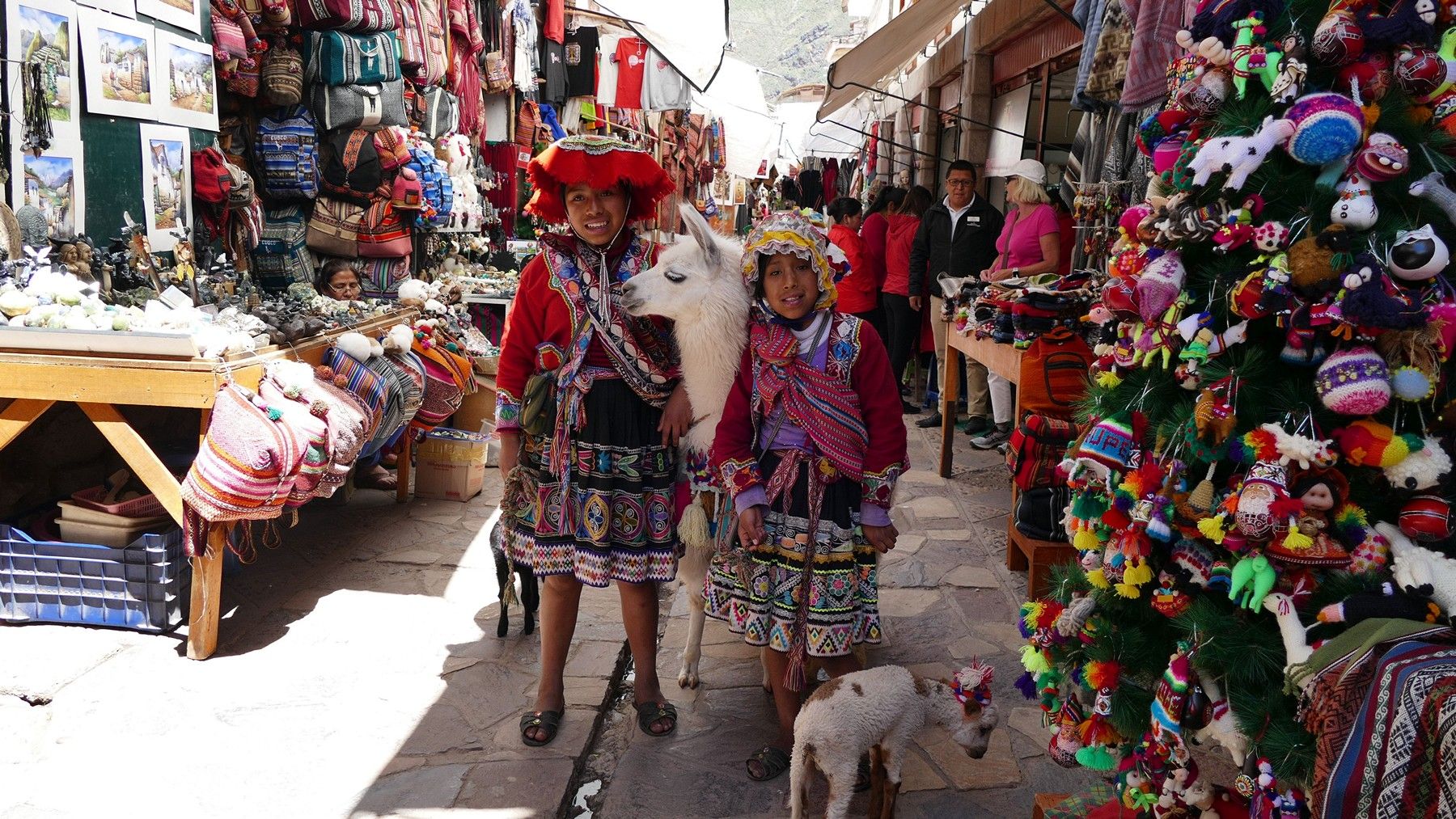
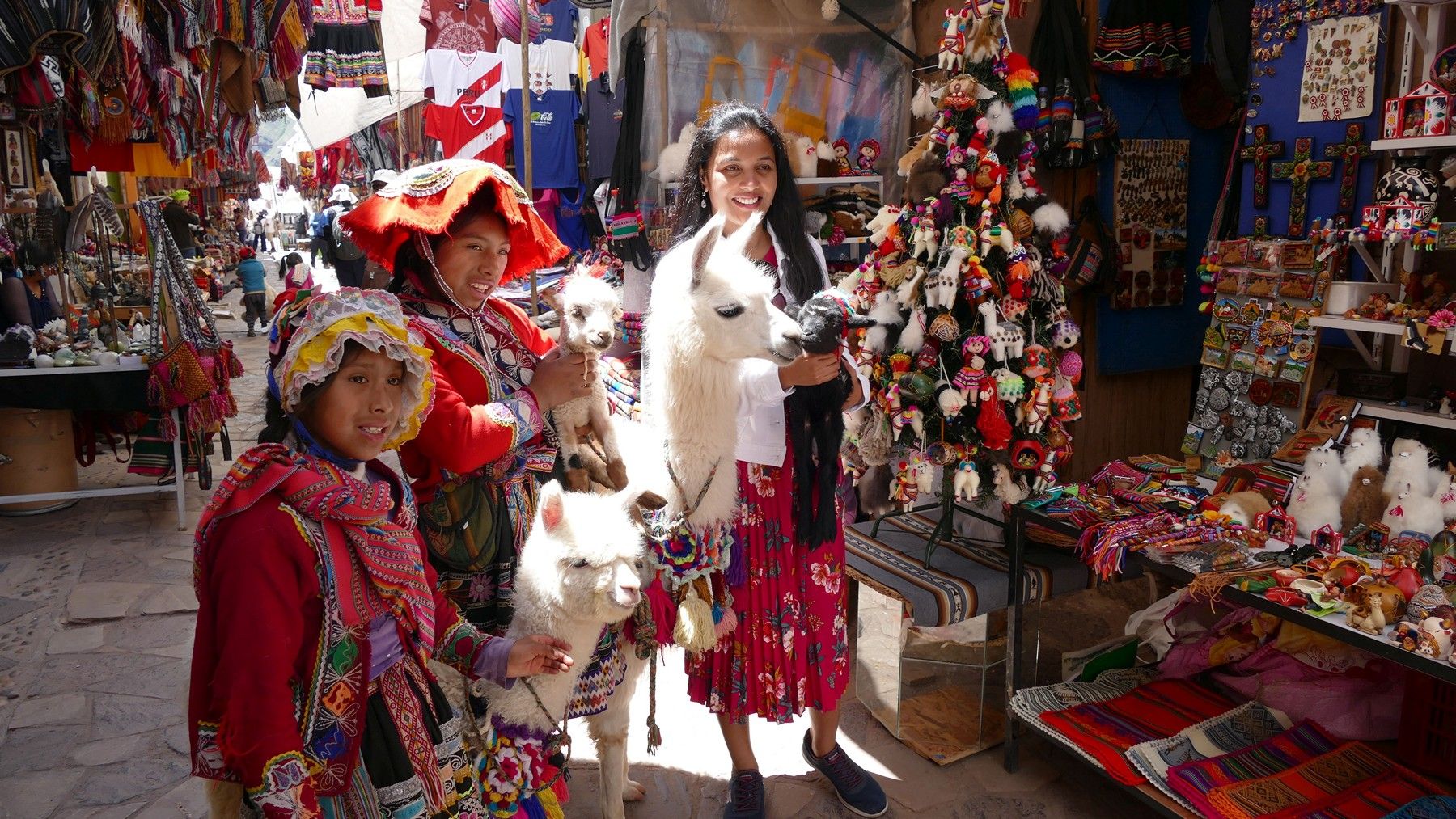
This guy bakes empanadas every day in this market in an oven that's been operational for 200 years - or so we were told.
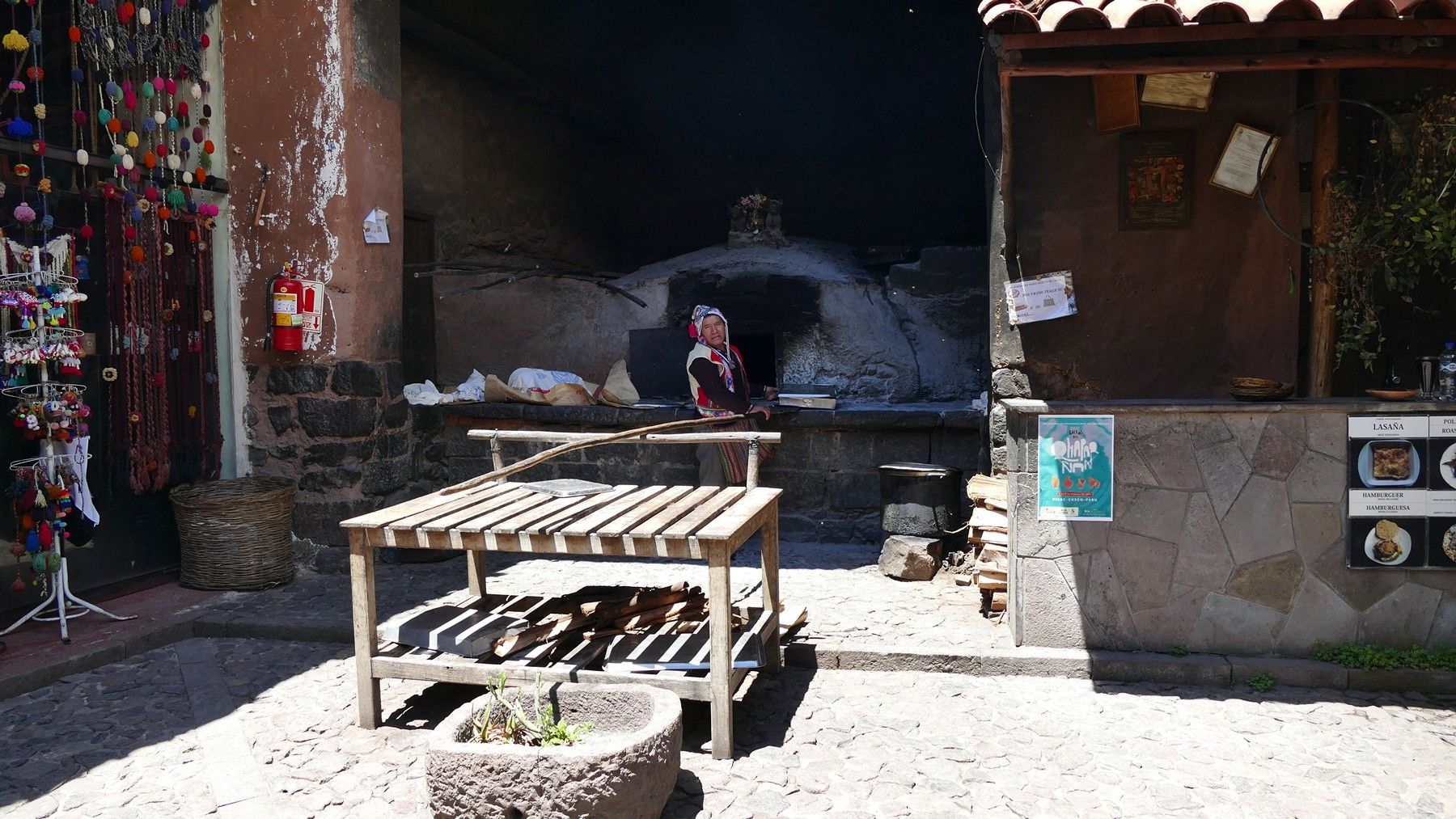
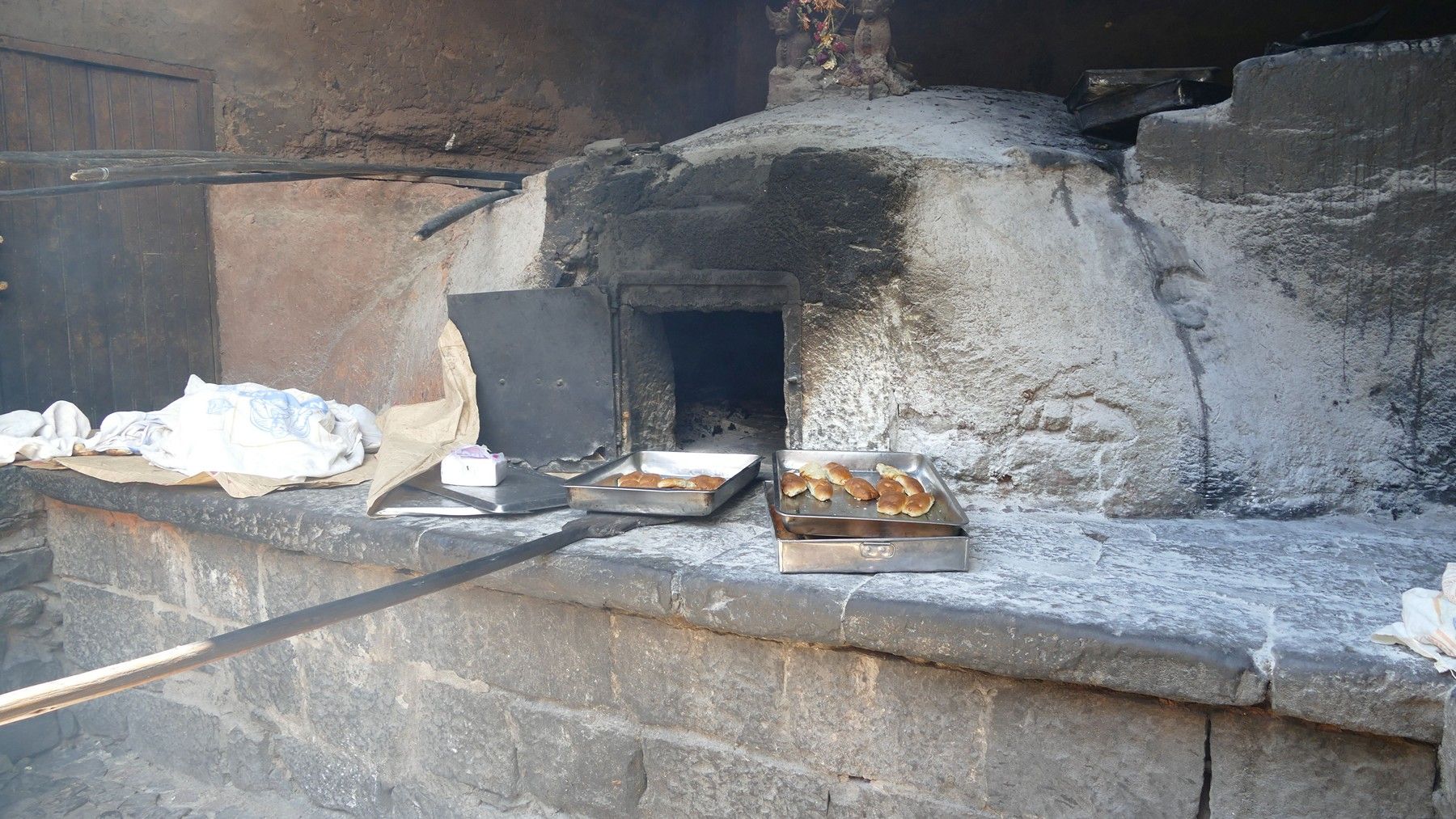
On the way to our hotel we go through more incredible countryside.
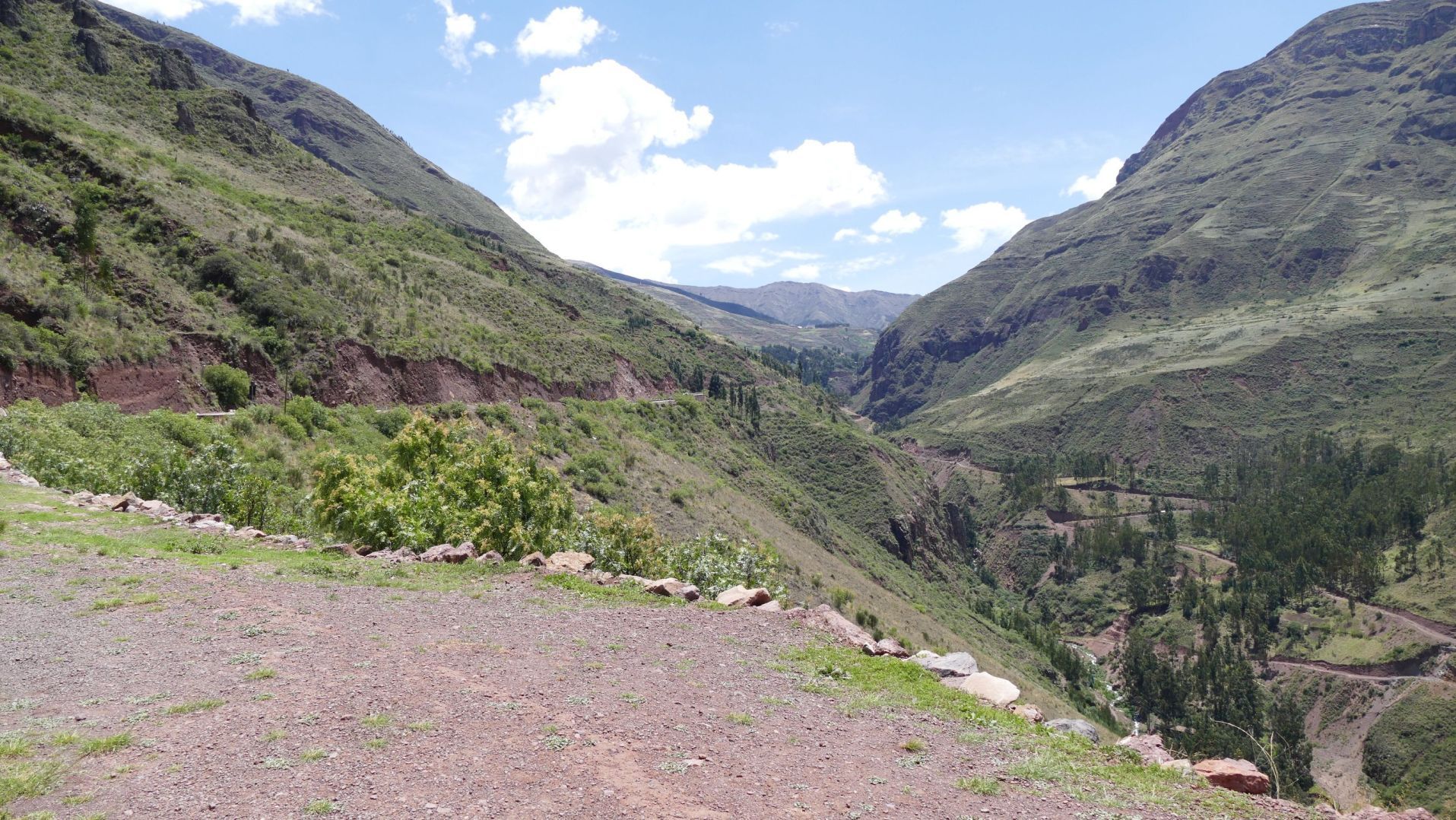
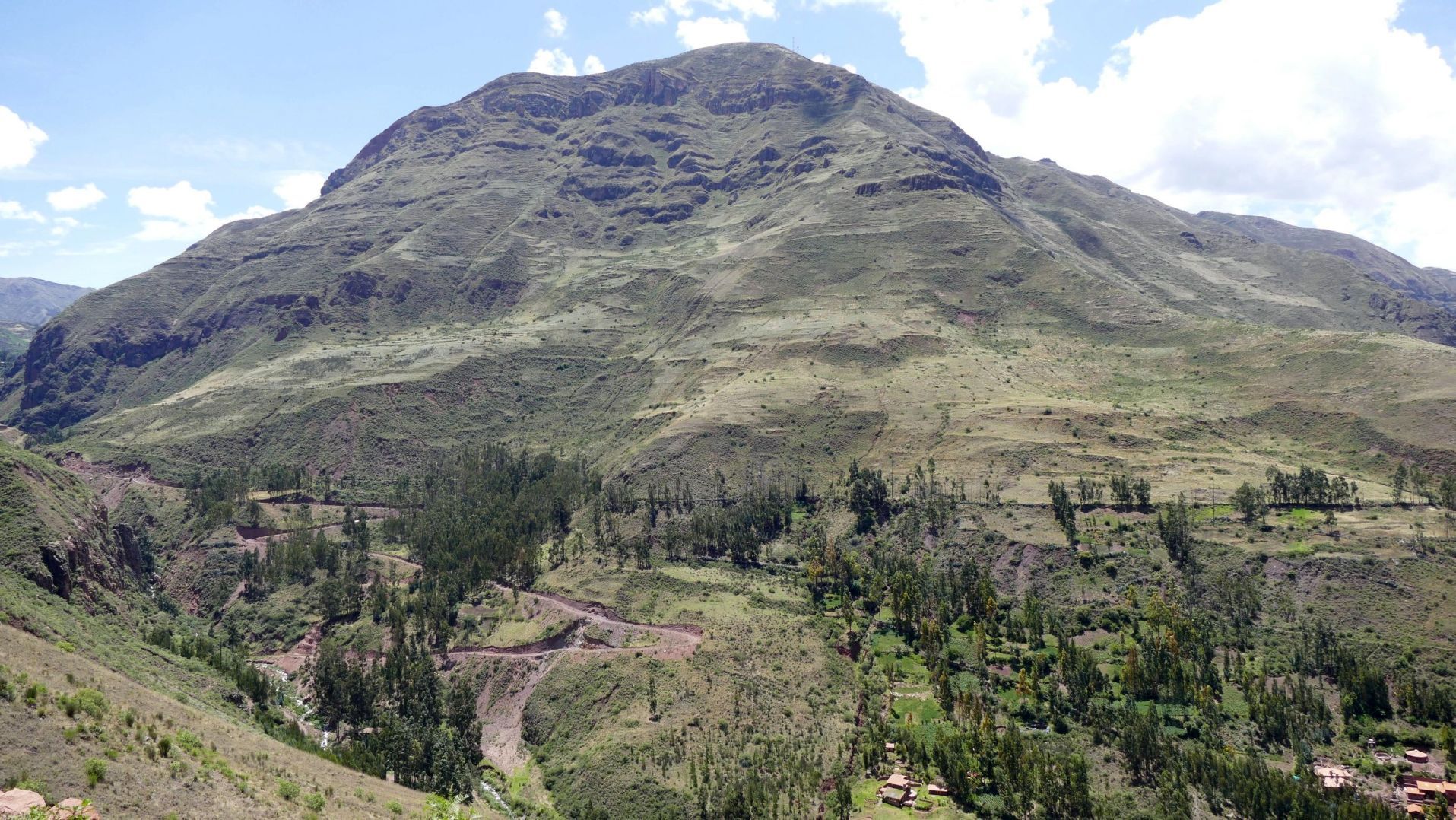
Some shots of the hotel we stayed at in the Sacred Valley - The Belmond Rio Sagrado. A great place with a great restaurant and great employees. My only beef is they do not have a TV in the rooms. We didn't come here to watch TV but this place is way outta town and there's nothing going on at night AND it's always nice to know if Trump has started World War Three.
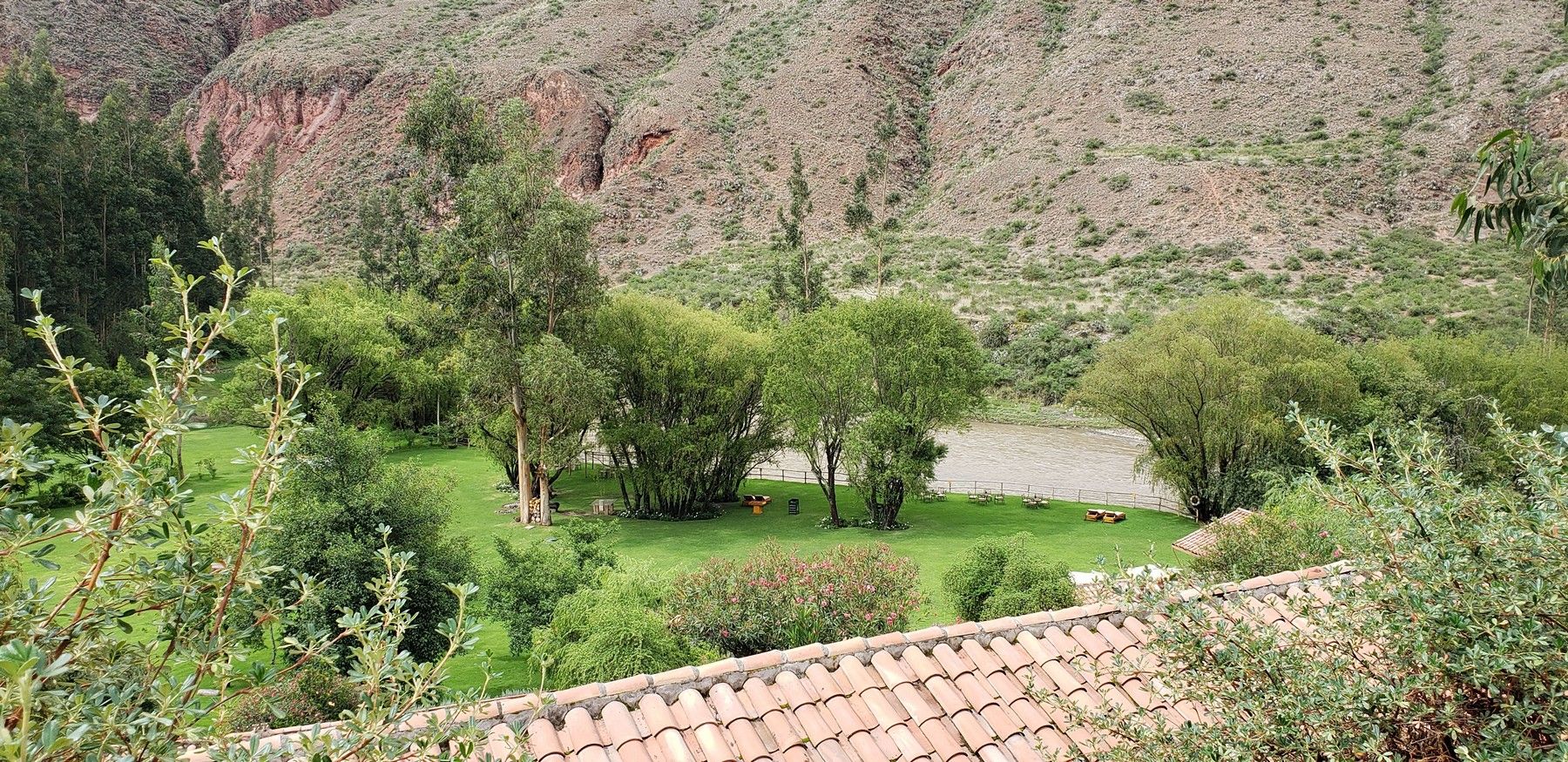
A nice pool that we didn't use. We always got back to the resort too late in the day and the sun was always going down soon.
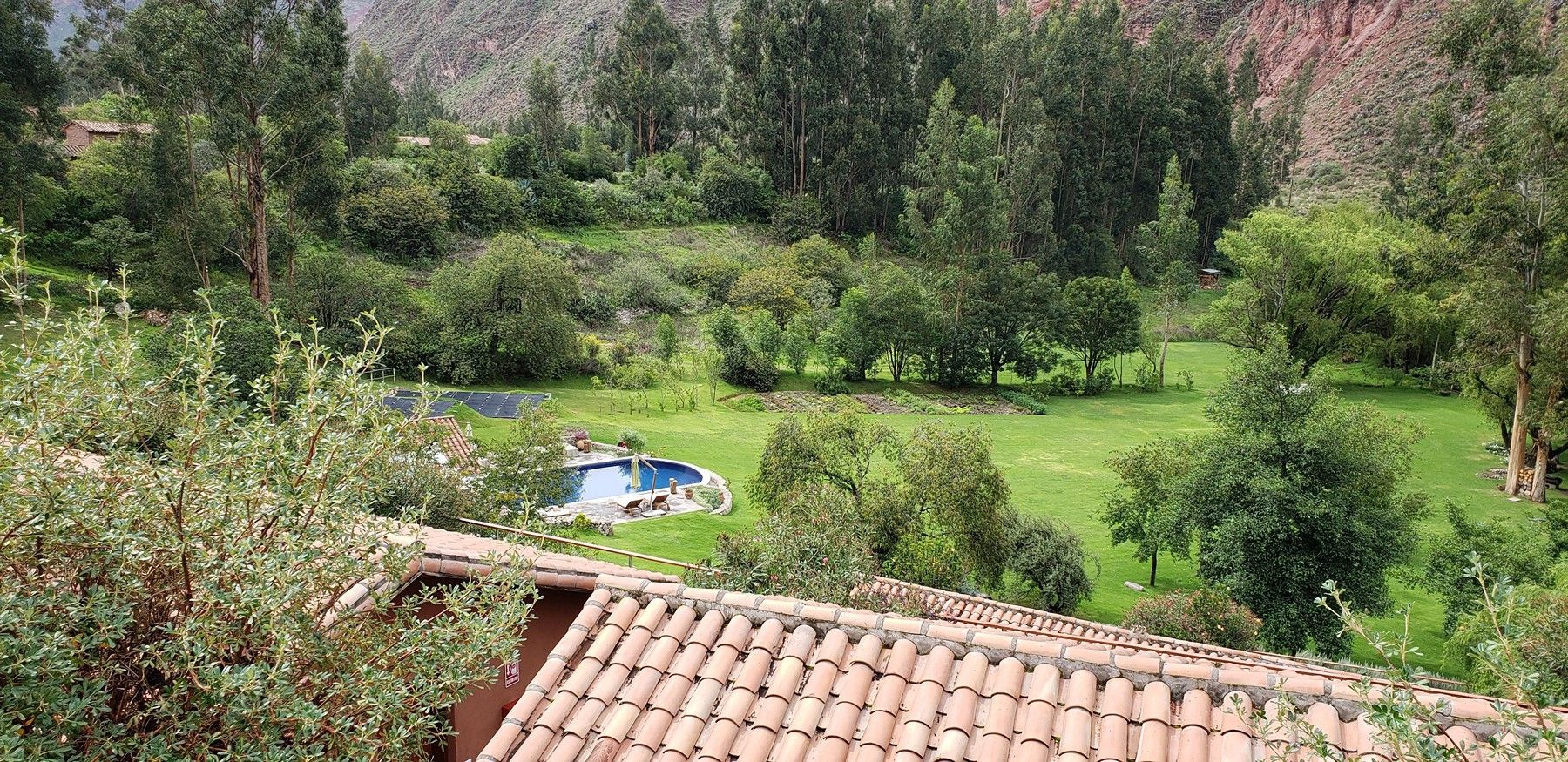
Mom and baby llama below.
A beautiful place fer sure.
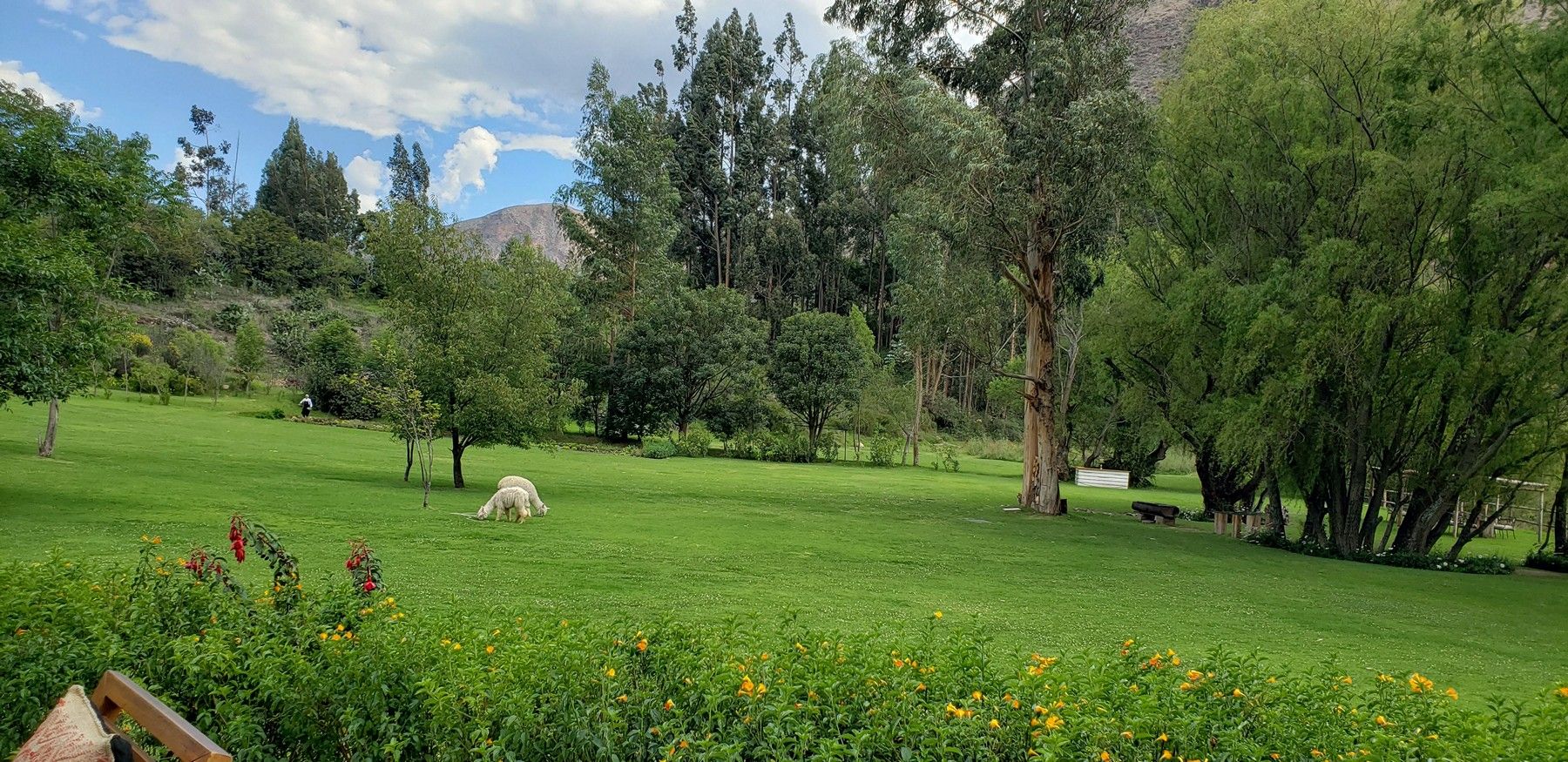
A few more shots from day 2.
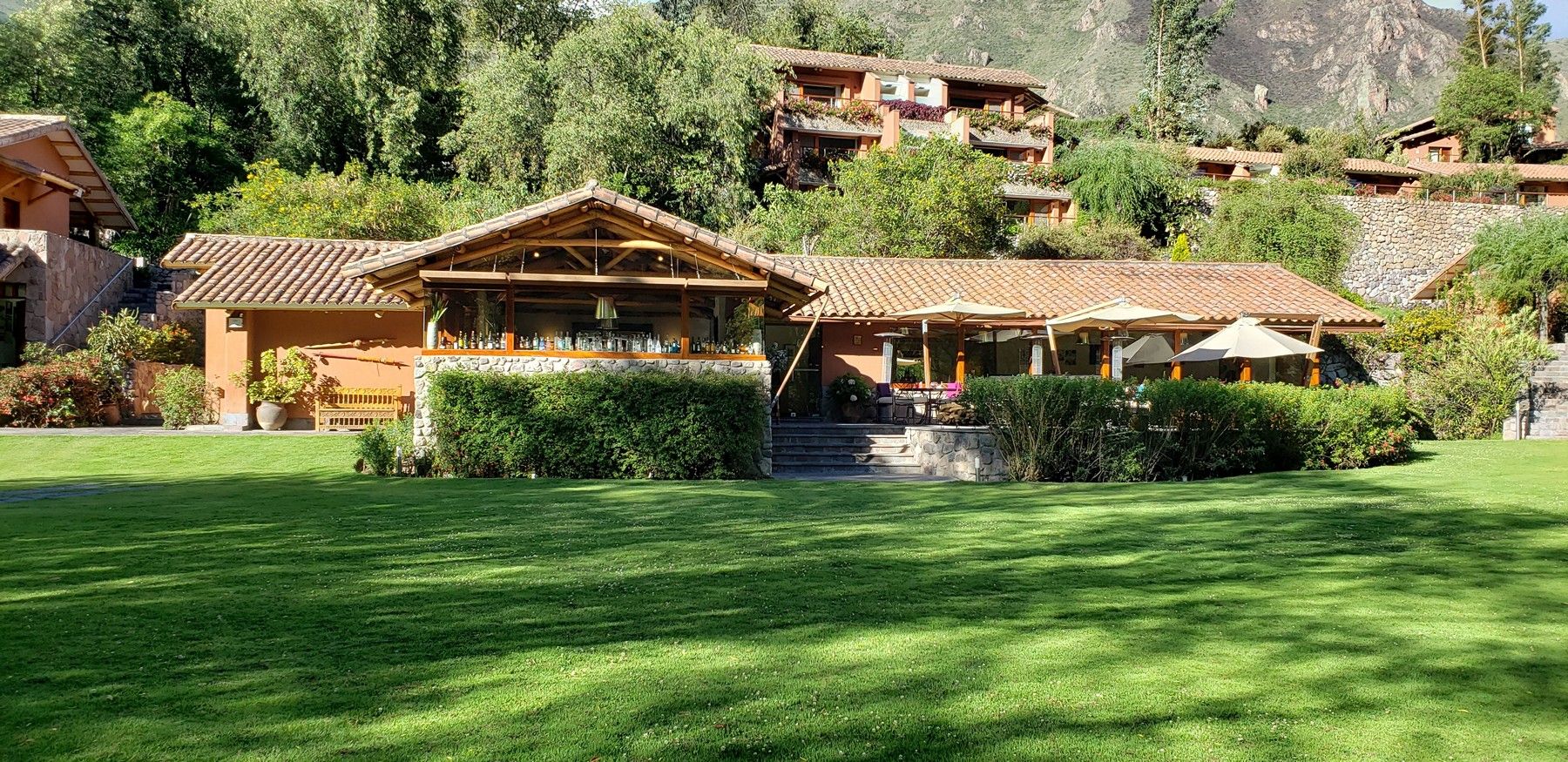
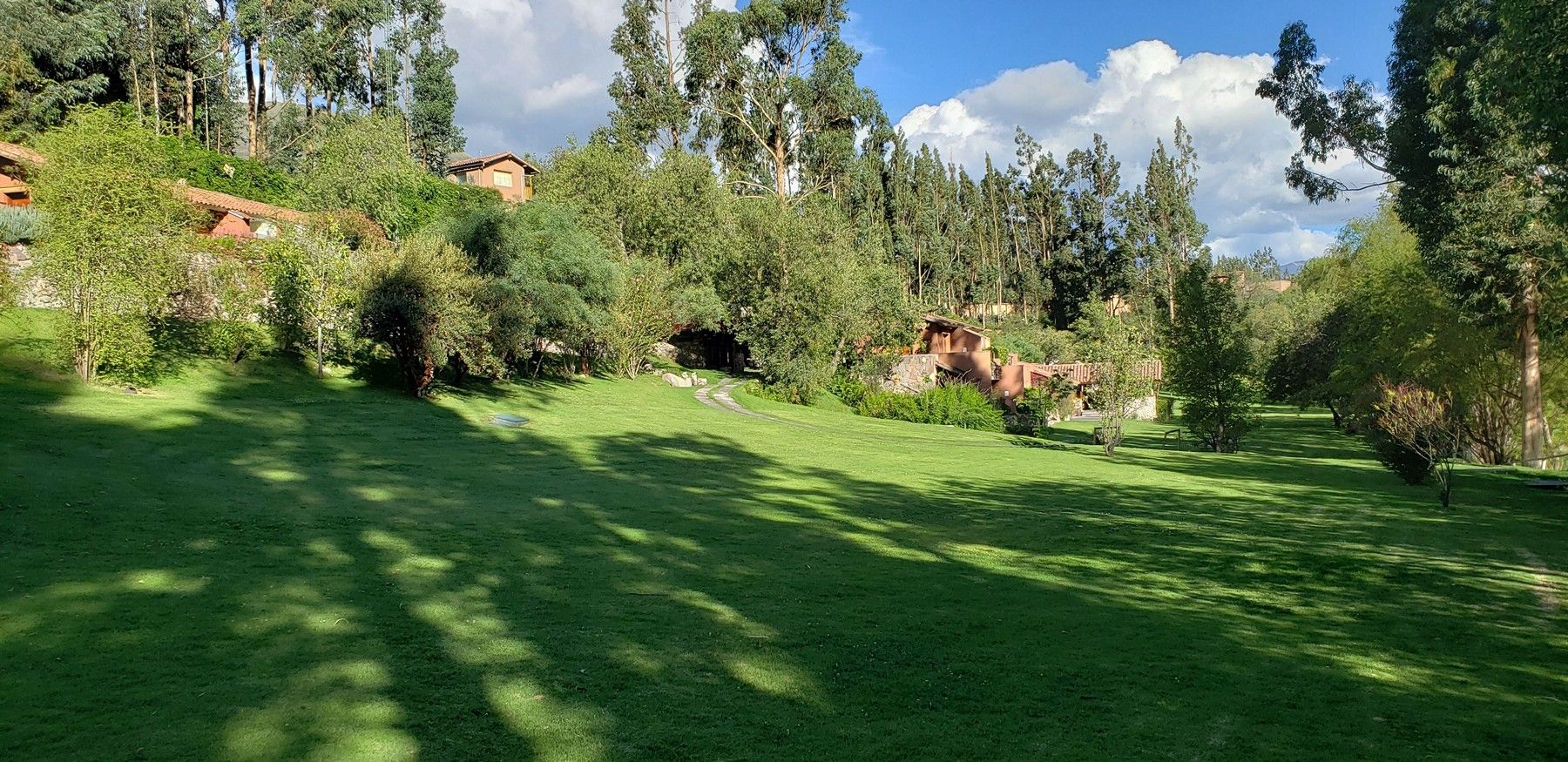
This is the Urubamba River. Strangely enough it is one of the rivers that joins with another river to form that Ucayali River which ultimately empties into the Amazon where we will be next week. We may see this water again.
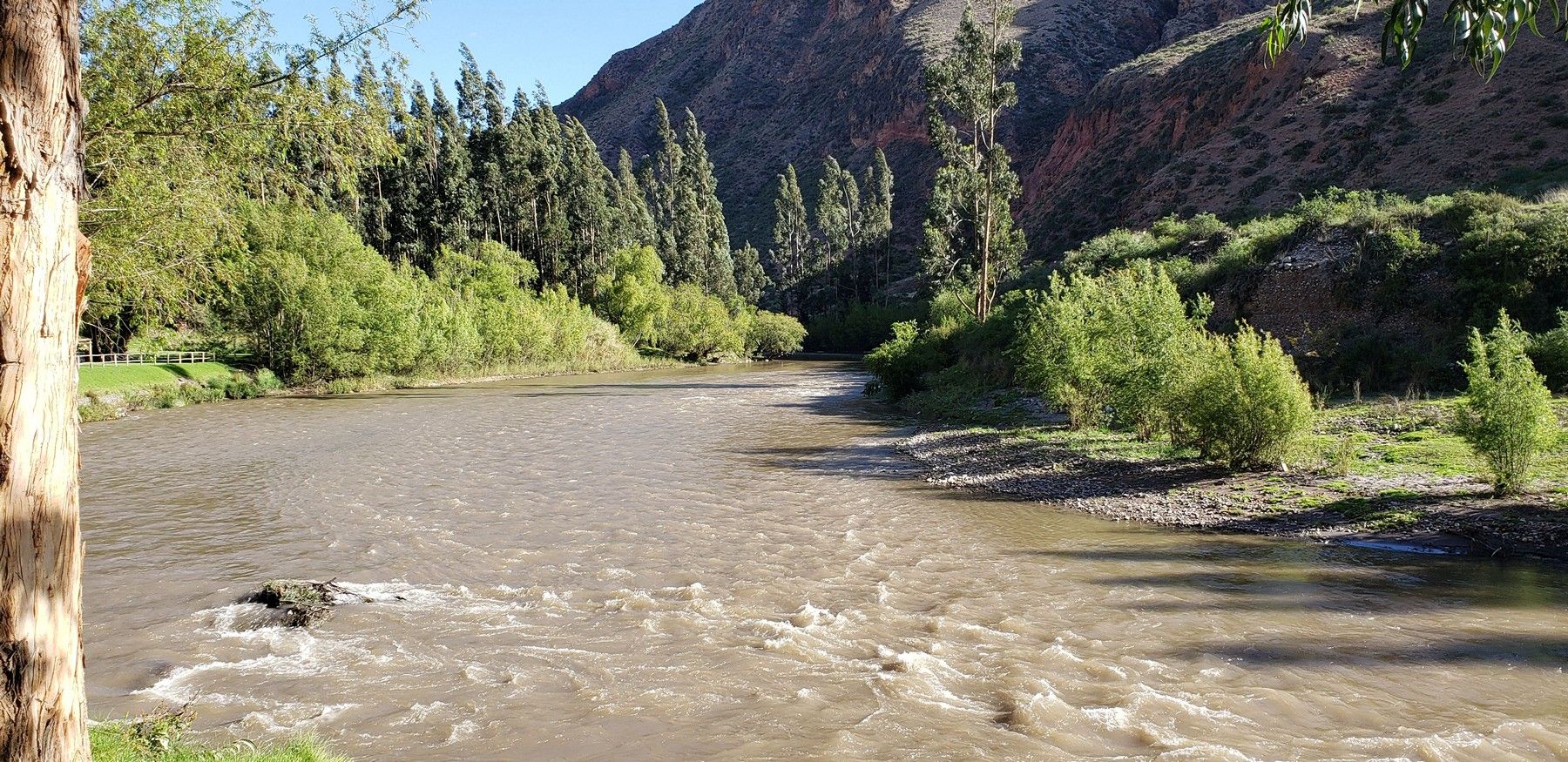
Our first stop on day two is Ollantaytambo. It's not too far from where we're staying and it's near where we'll catch the train to Aguas Calientes tomorrow.
It's an ancient Inca town and many modern buildings are built incorporating previous Inca constructions. This is something we'll see plenty of when we go to Cusco in a few days.
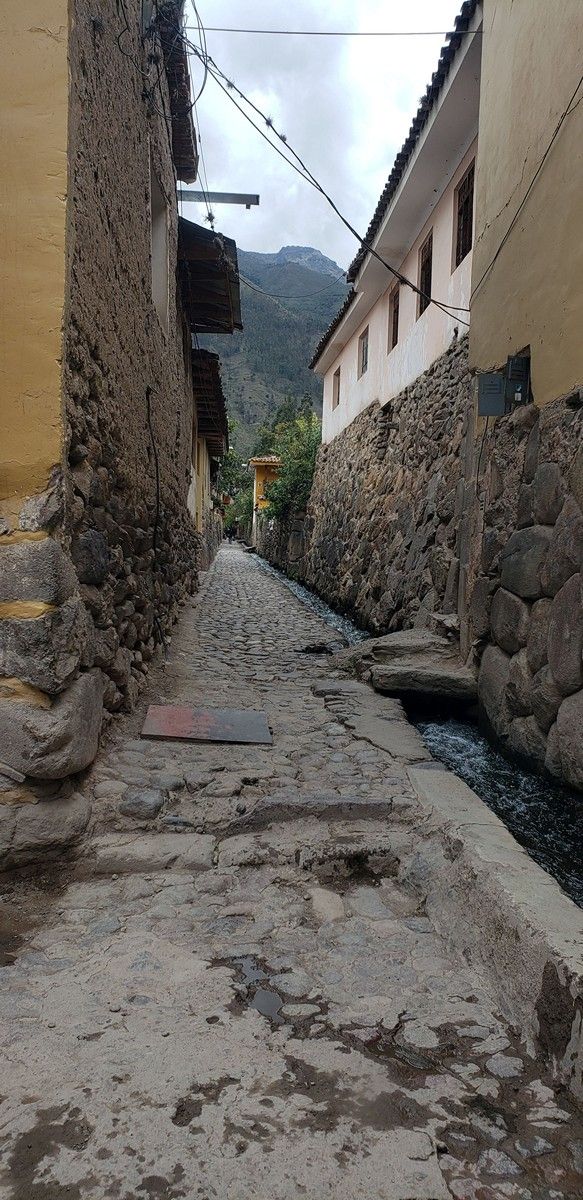
A huge terraced hill that we have to climb.
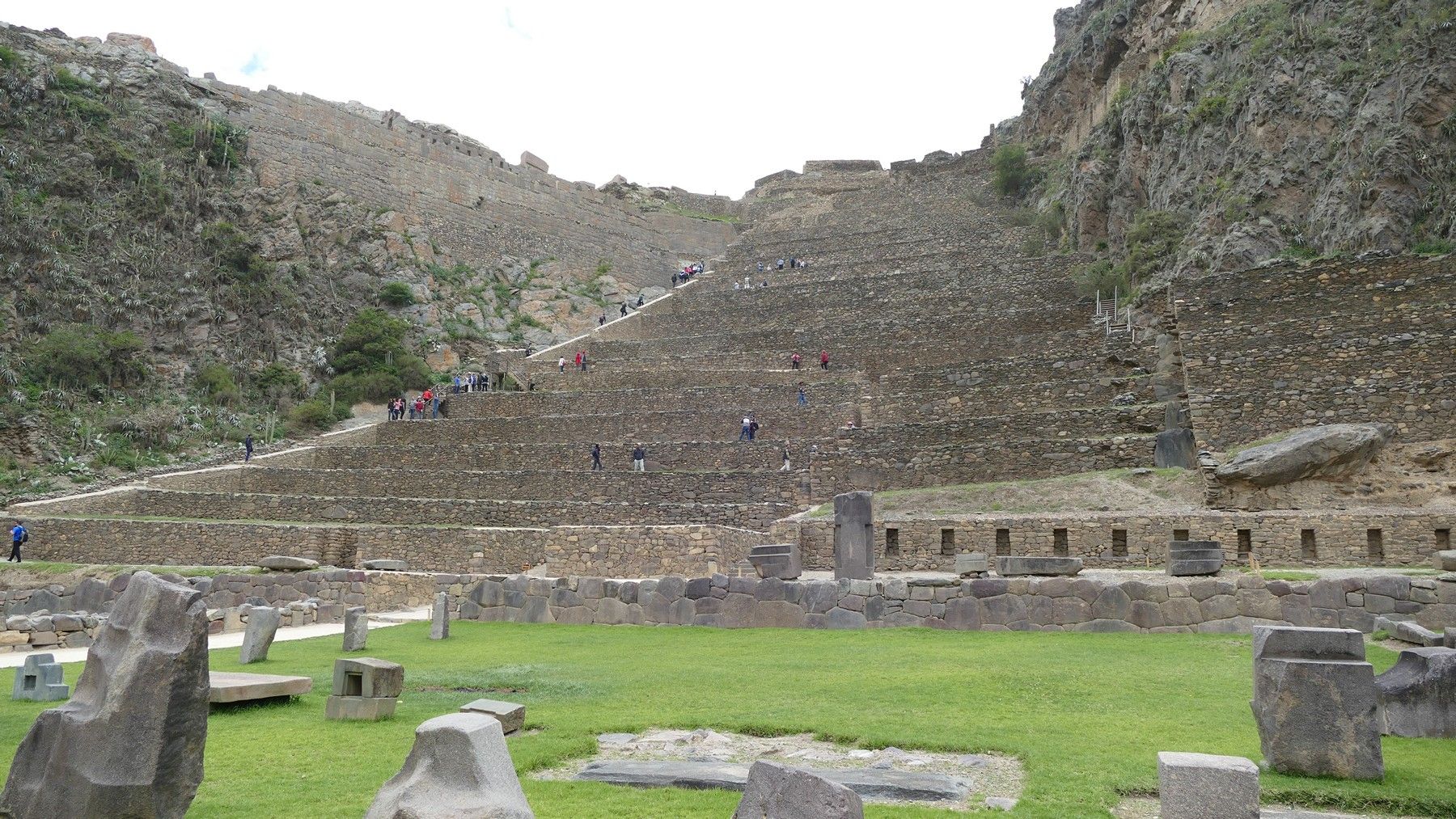
Our guide, Francis, and Terri leading the way.
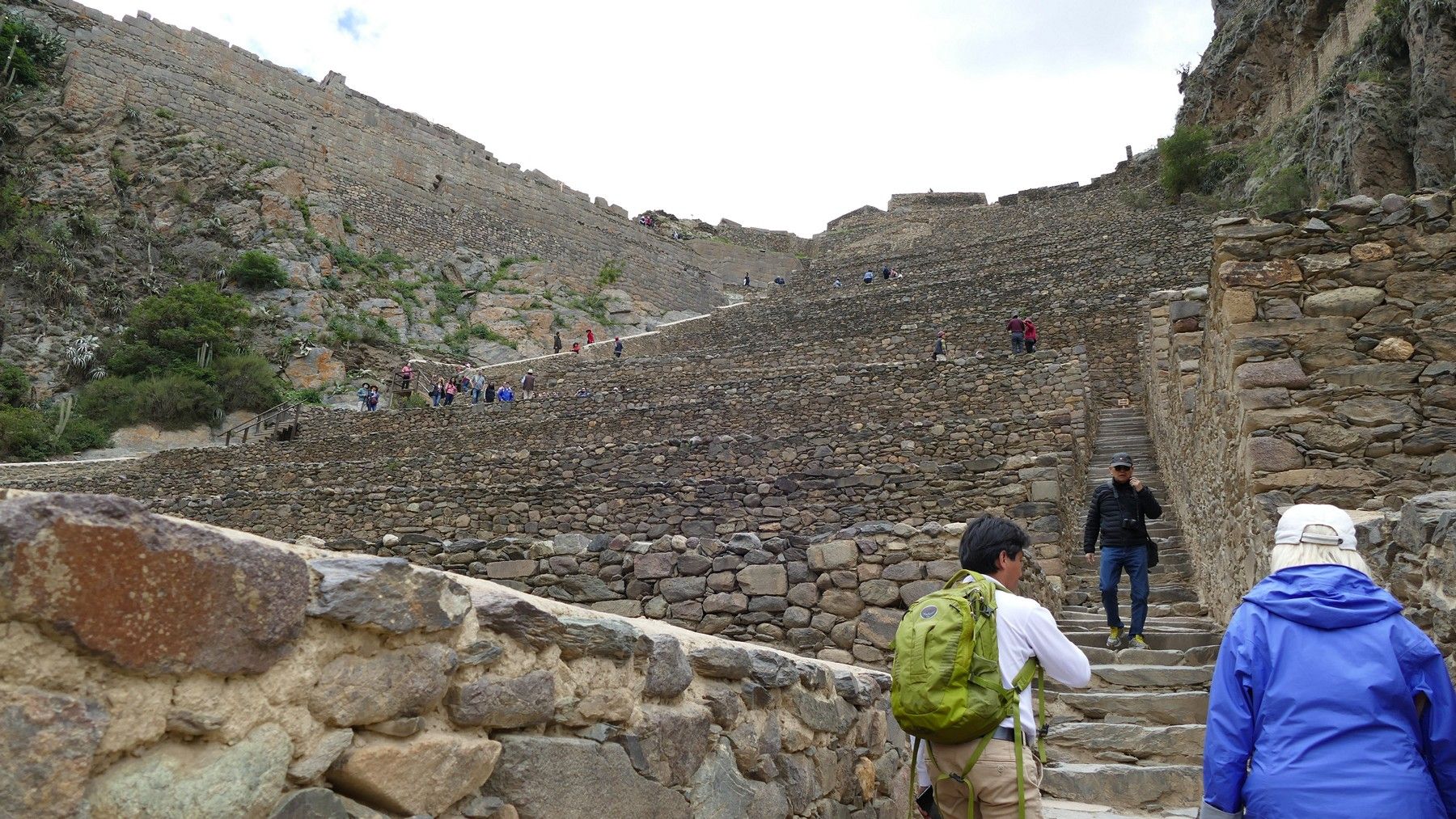
An example below of the craftsmanship of the Inca builders. You cannot slide a credit card between the joints in these rocks.
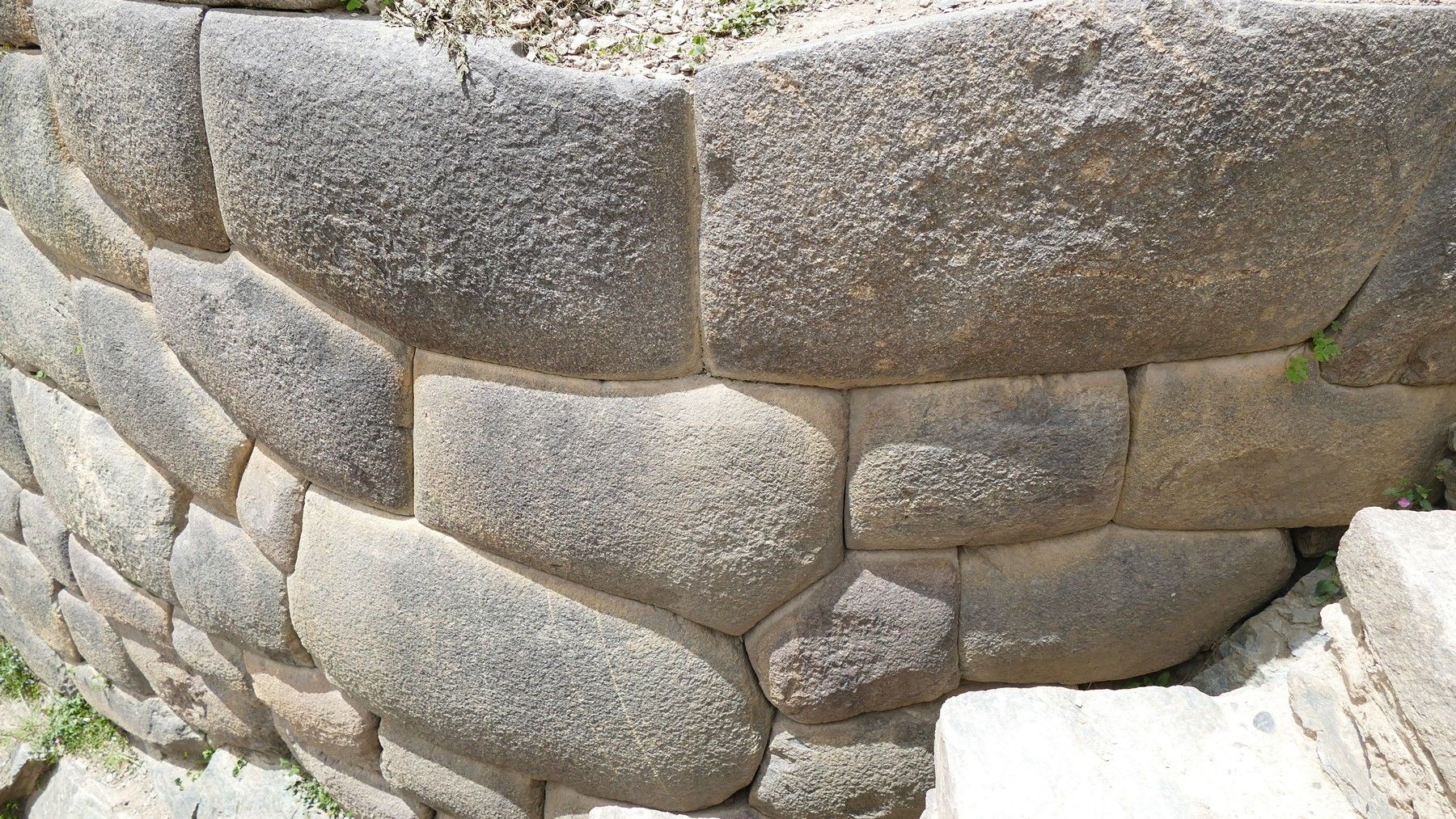
More...these are big rocks. See next pic.
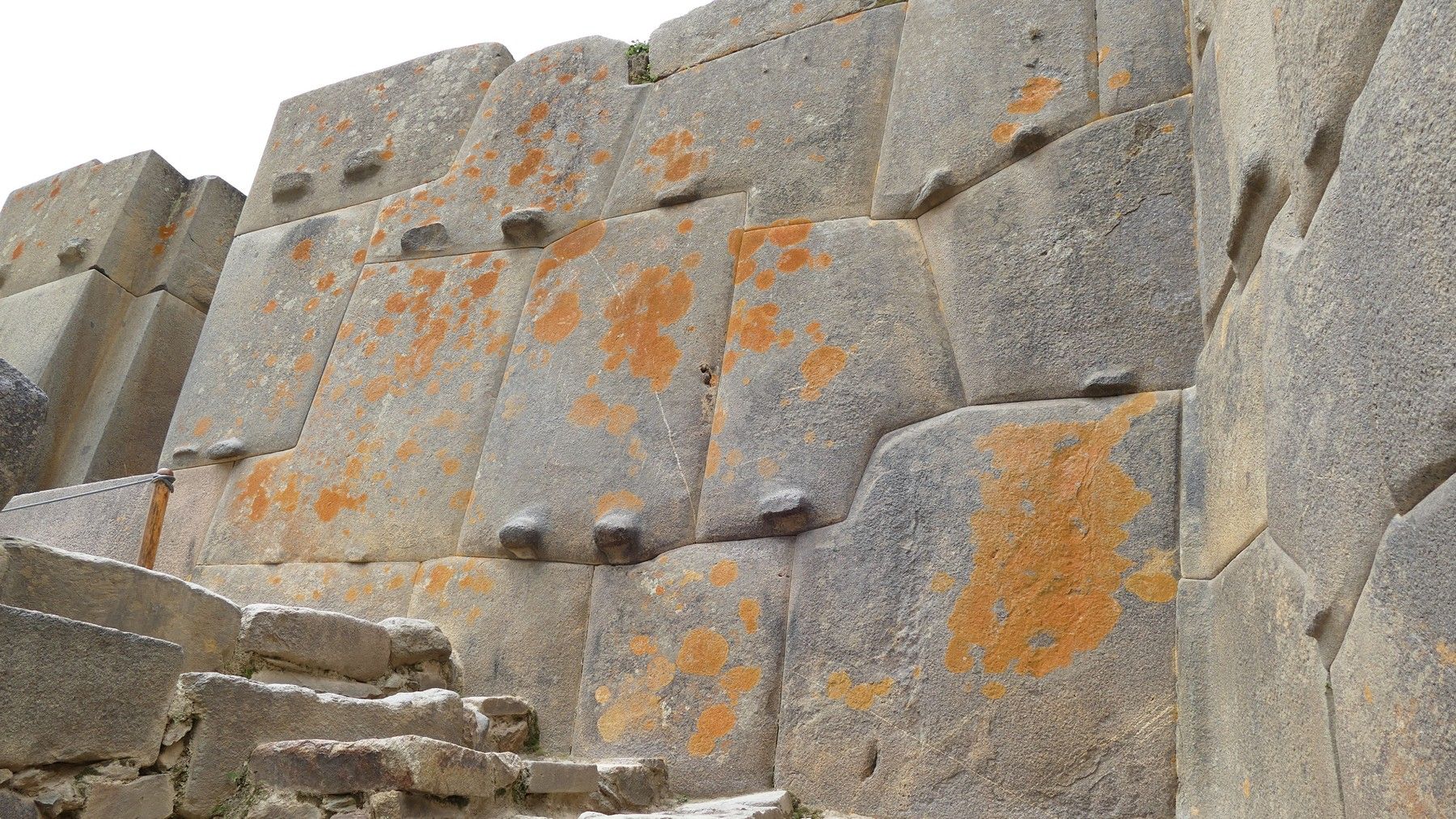
Terri poses to provide some scale on just how big some of these rocks are. And these ones had to be haule all the way up from the valley below.
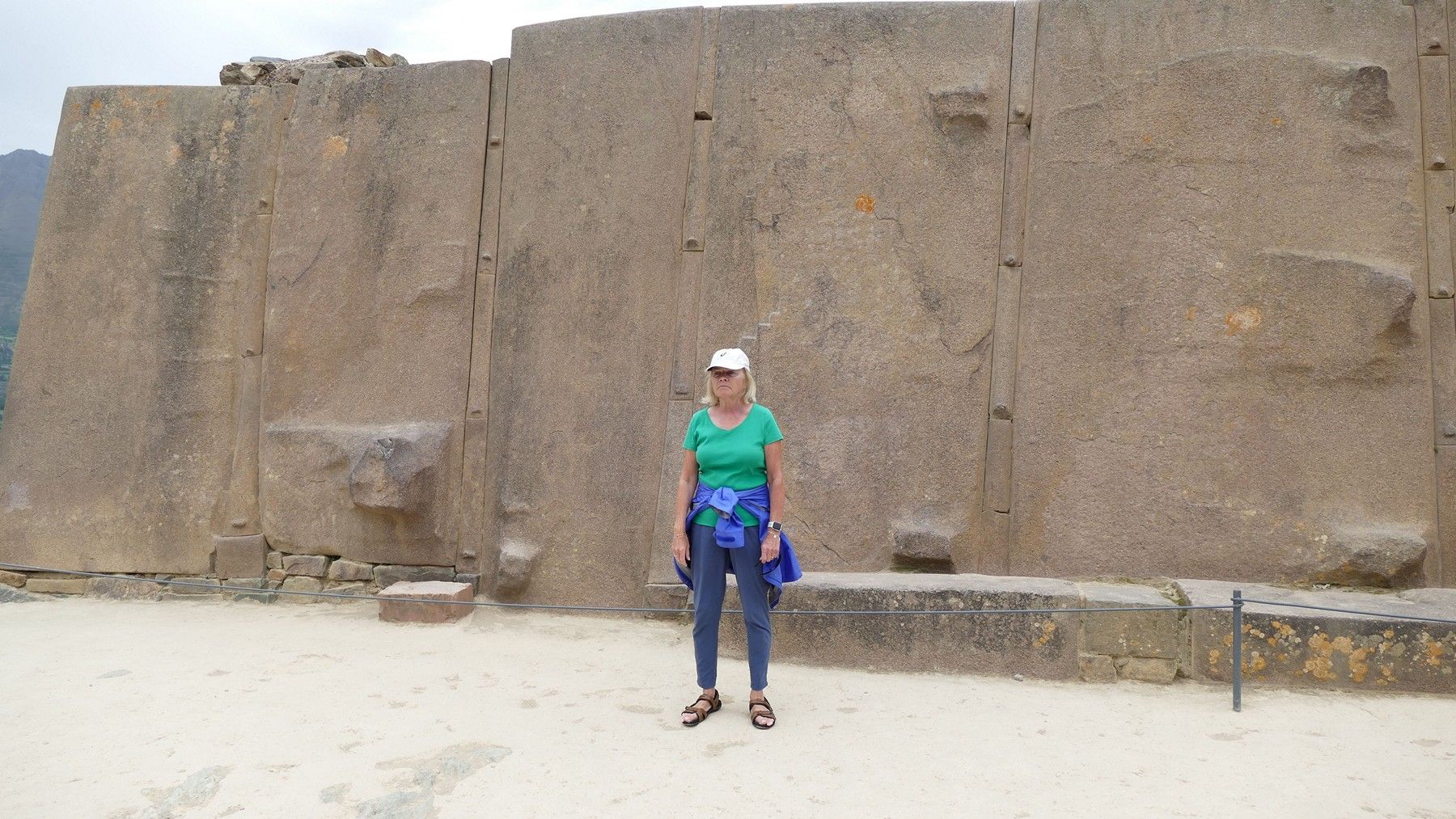
Out guide told us the big rocks above were quarried in the area under the red circle and dragged up the hill on a dirt ramp that is still partially visible in the green circle.
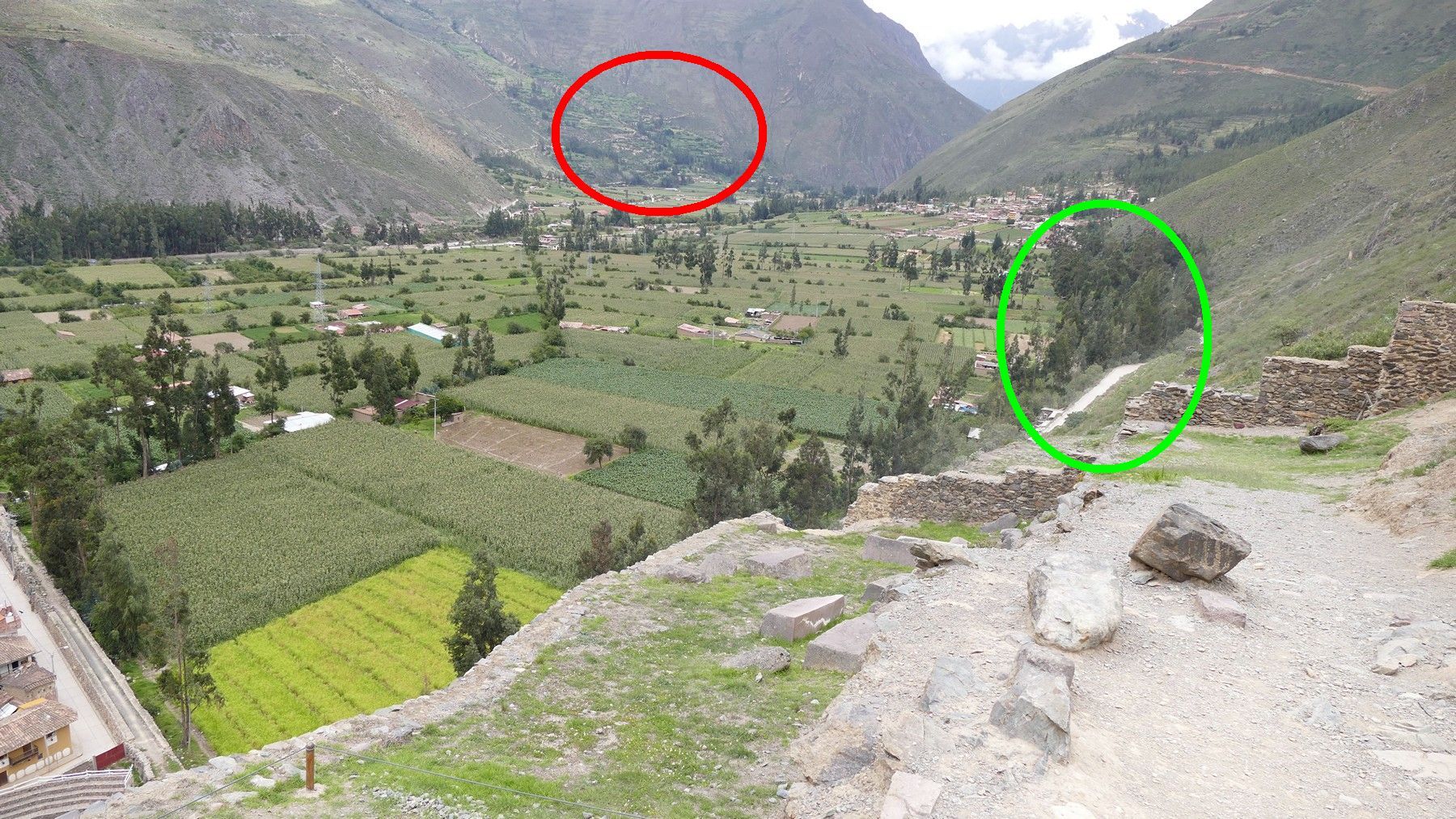

Looking back down from the top. The covered areas at the top of the pic are all vendor stalls. This is a very busy tourist destination.
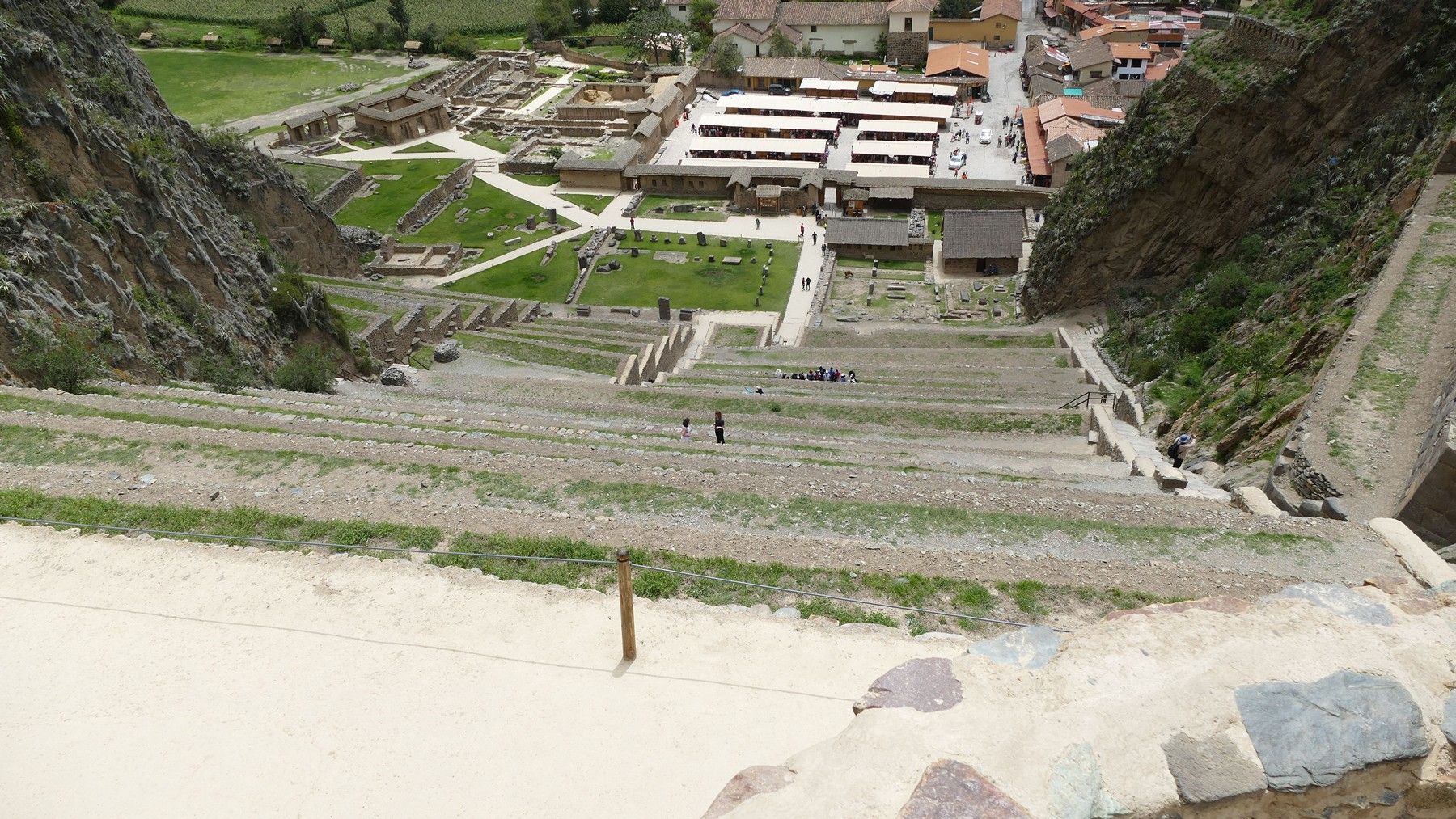
A storehouse further up the hill that we didn't get to.
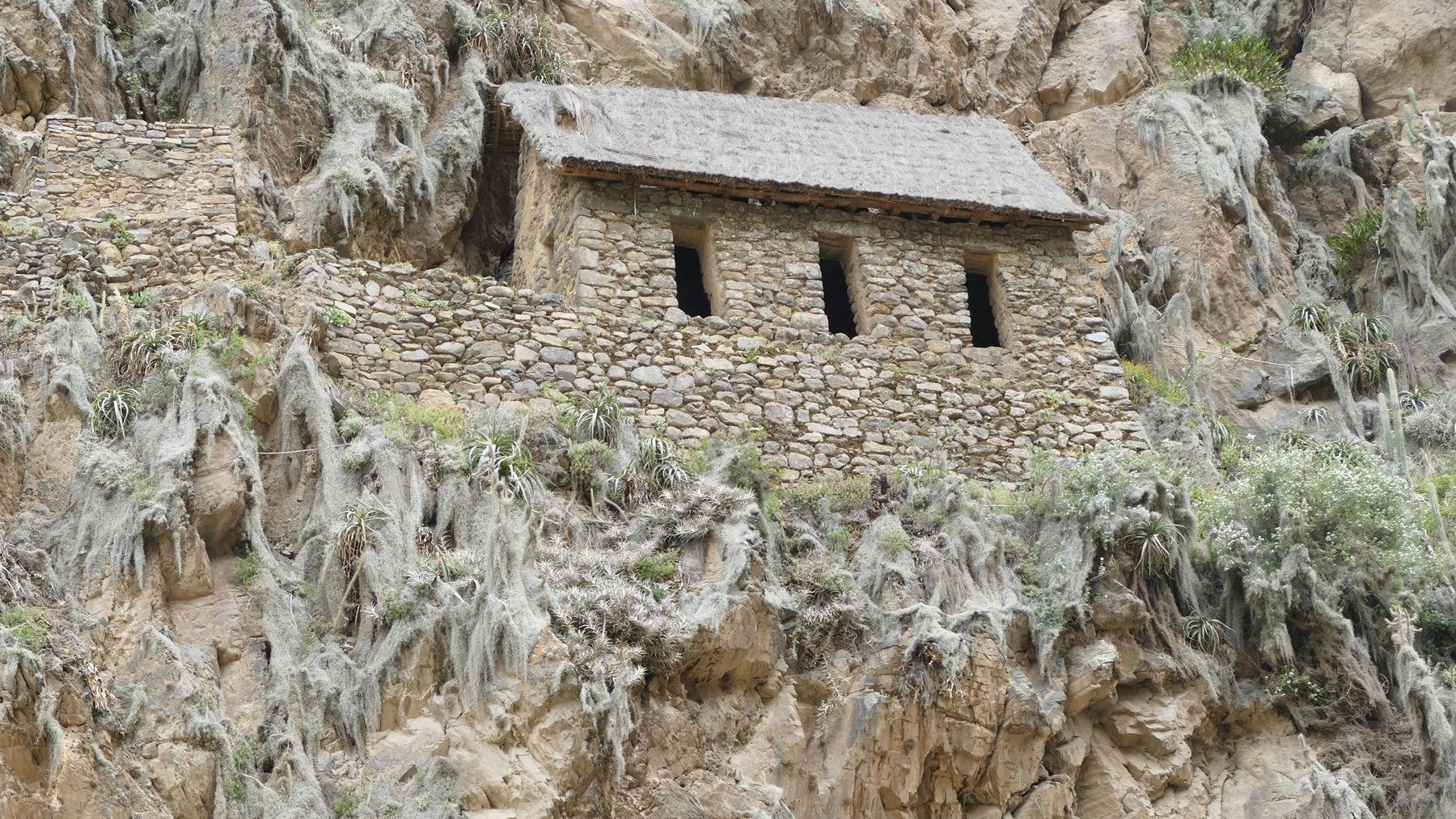
And another set of terraces that we didn't explore.
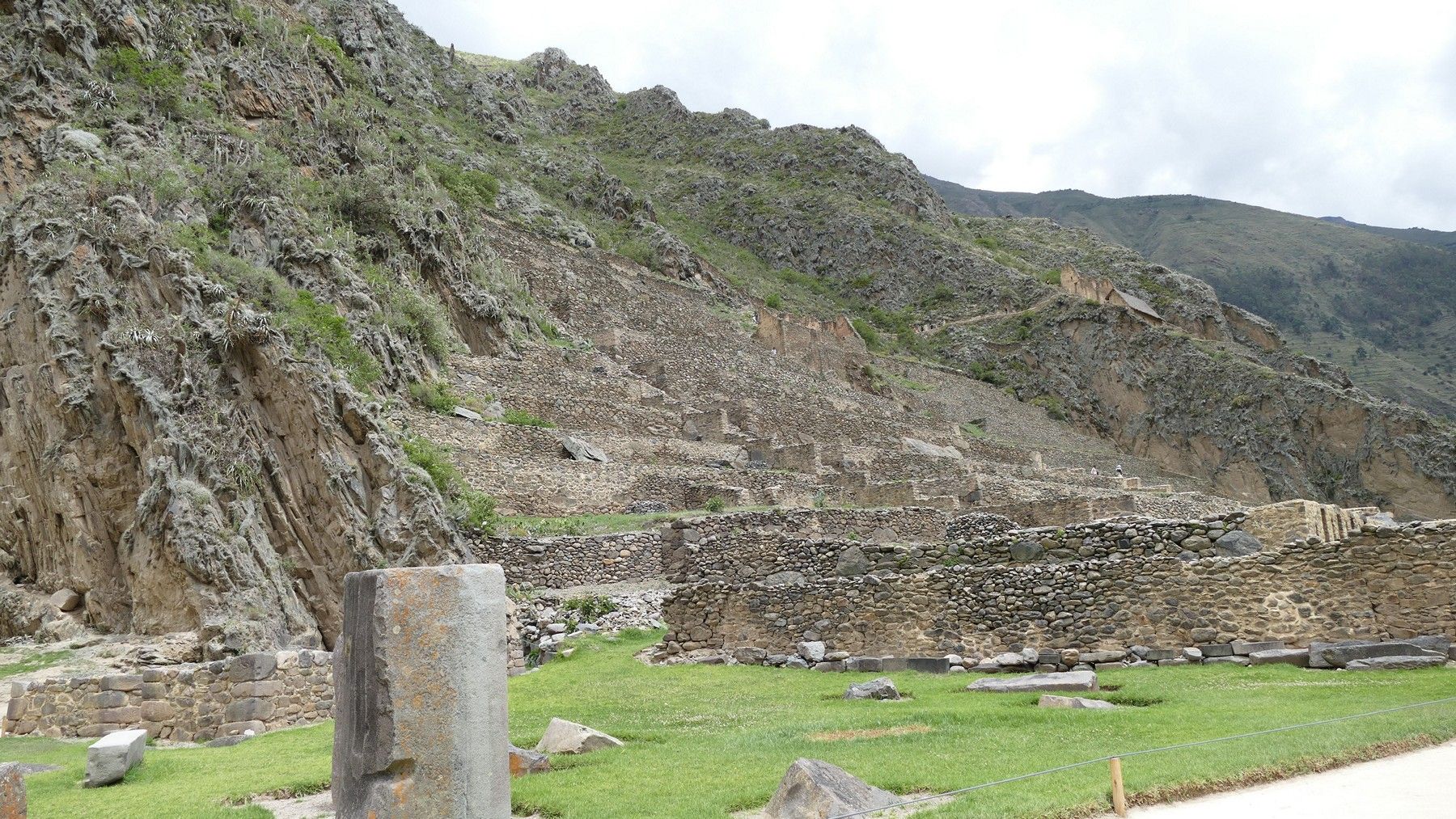
On the way to our next stop we go by some pretty impressive scenery.
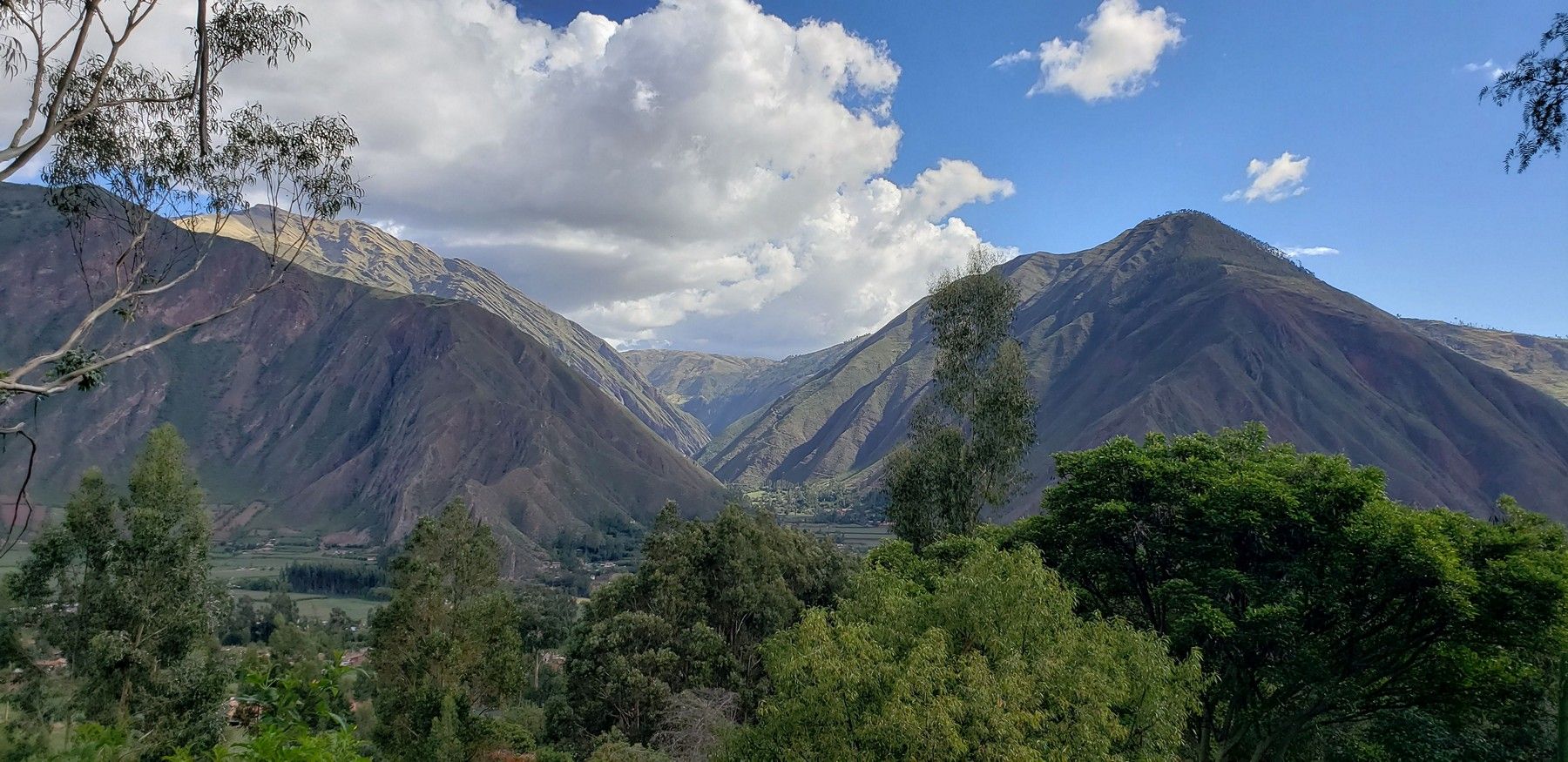
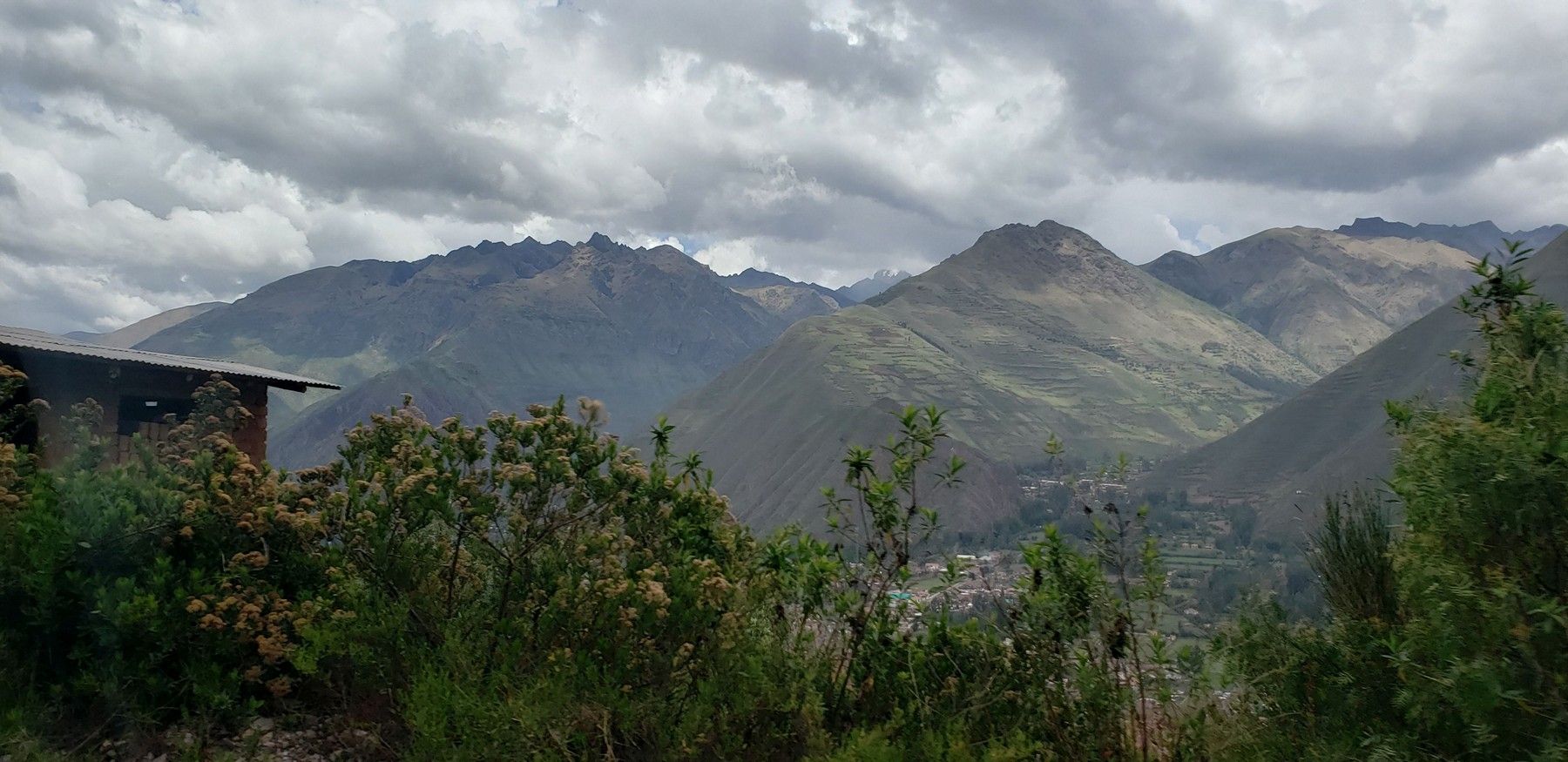
Note the glacier in the distance.
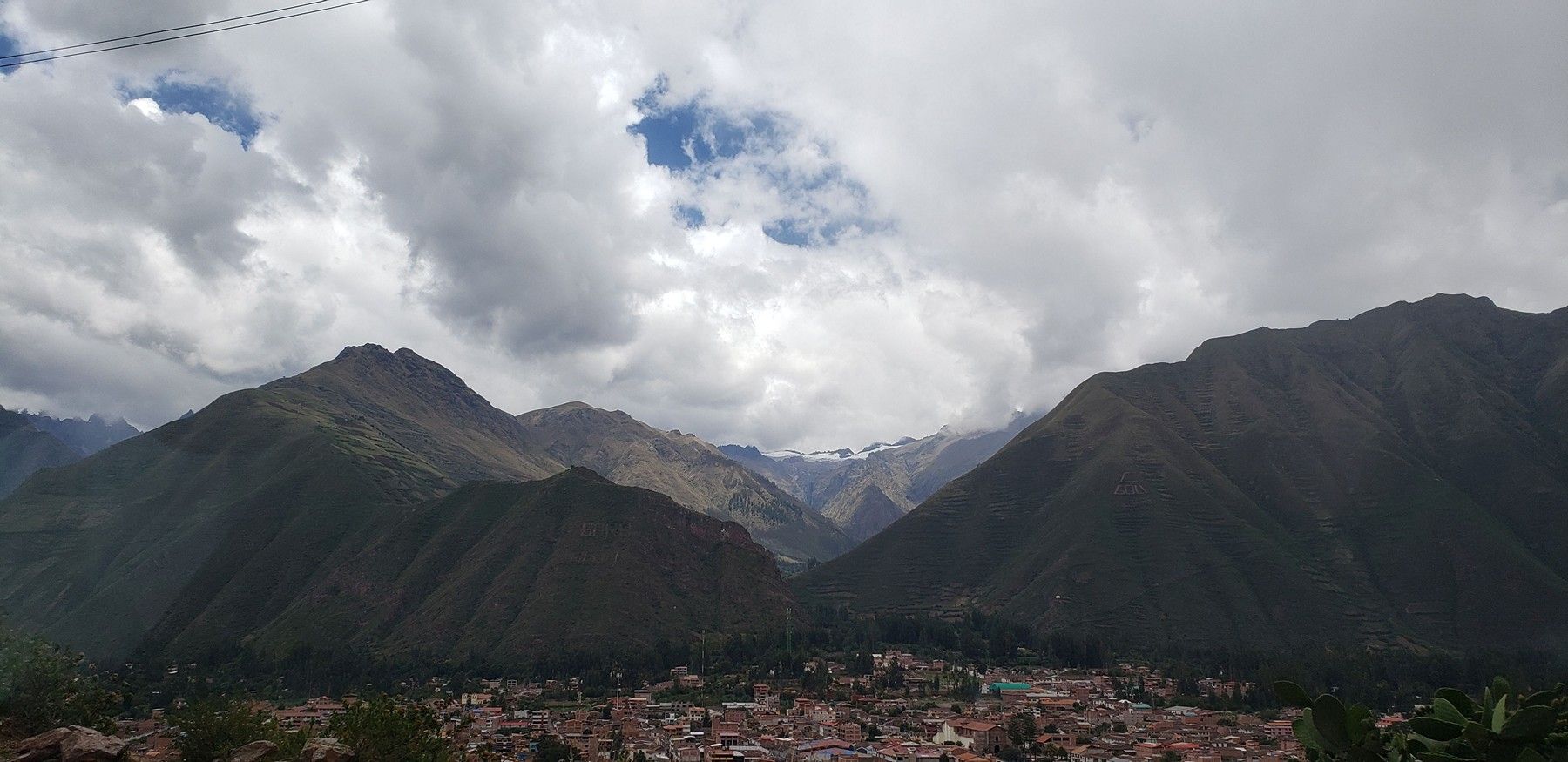
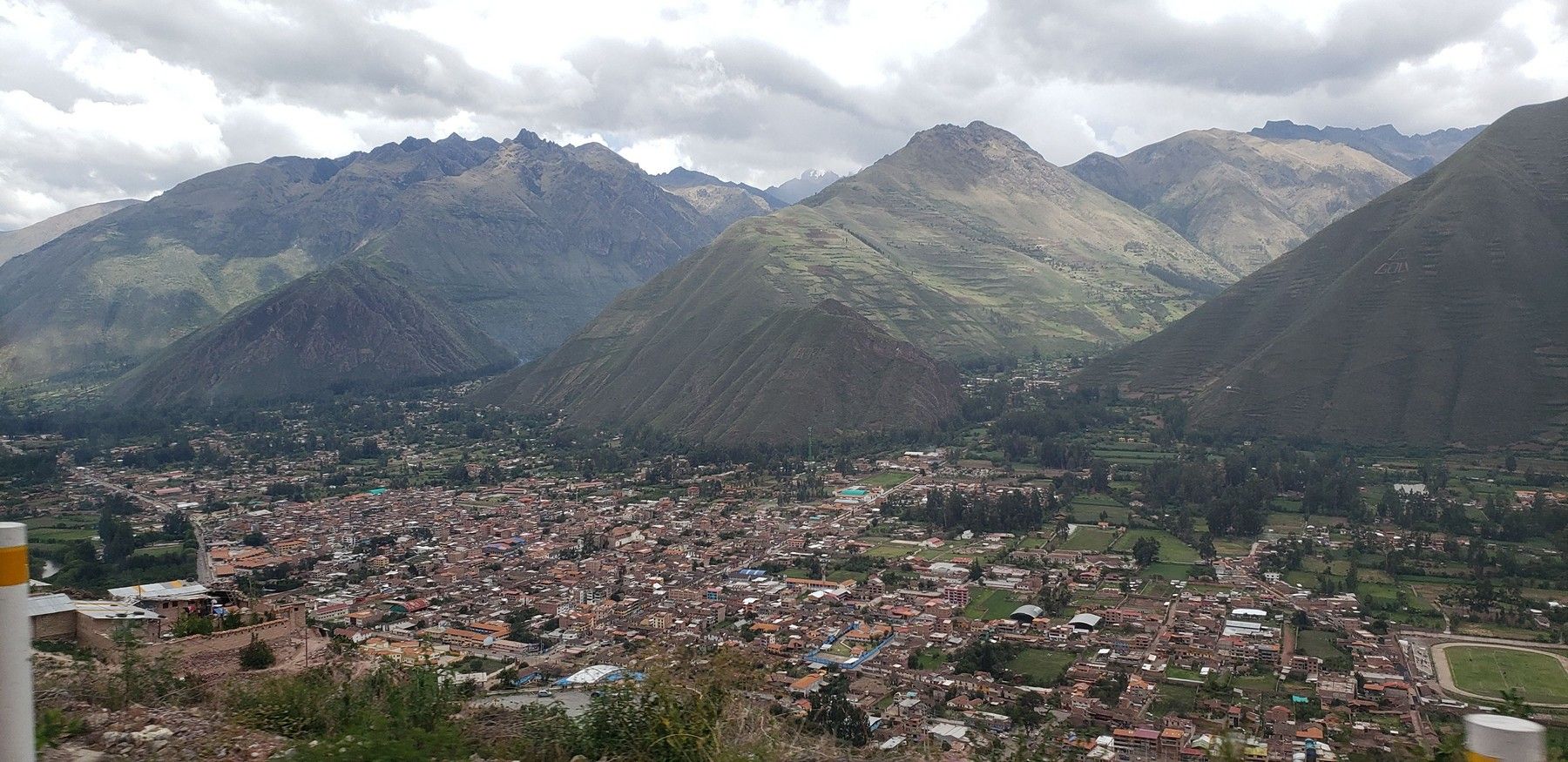
The next place we visited was Chinchero. This was a very high area 3,725 meters above sea level. We didn't have any altitude sickness but we certainly weren't exerting ourselves either.
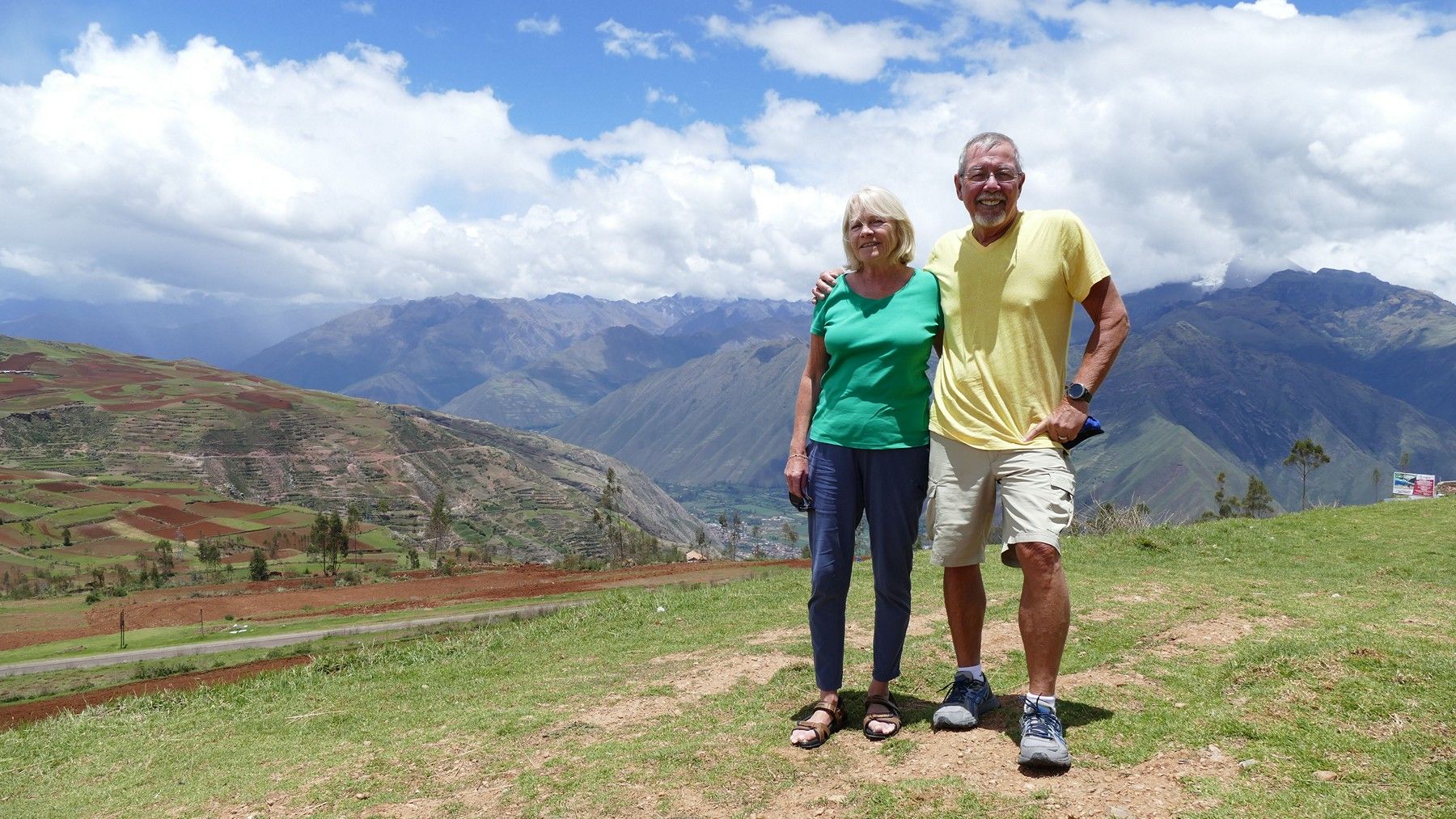
It's entirely different scenery at this altitude.
The terraces on the hill in the centre of the picture ar for growing potatoes. They grow 3,800 different types of potatoes in Peru and some of them grow in these extreme altitudes.

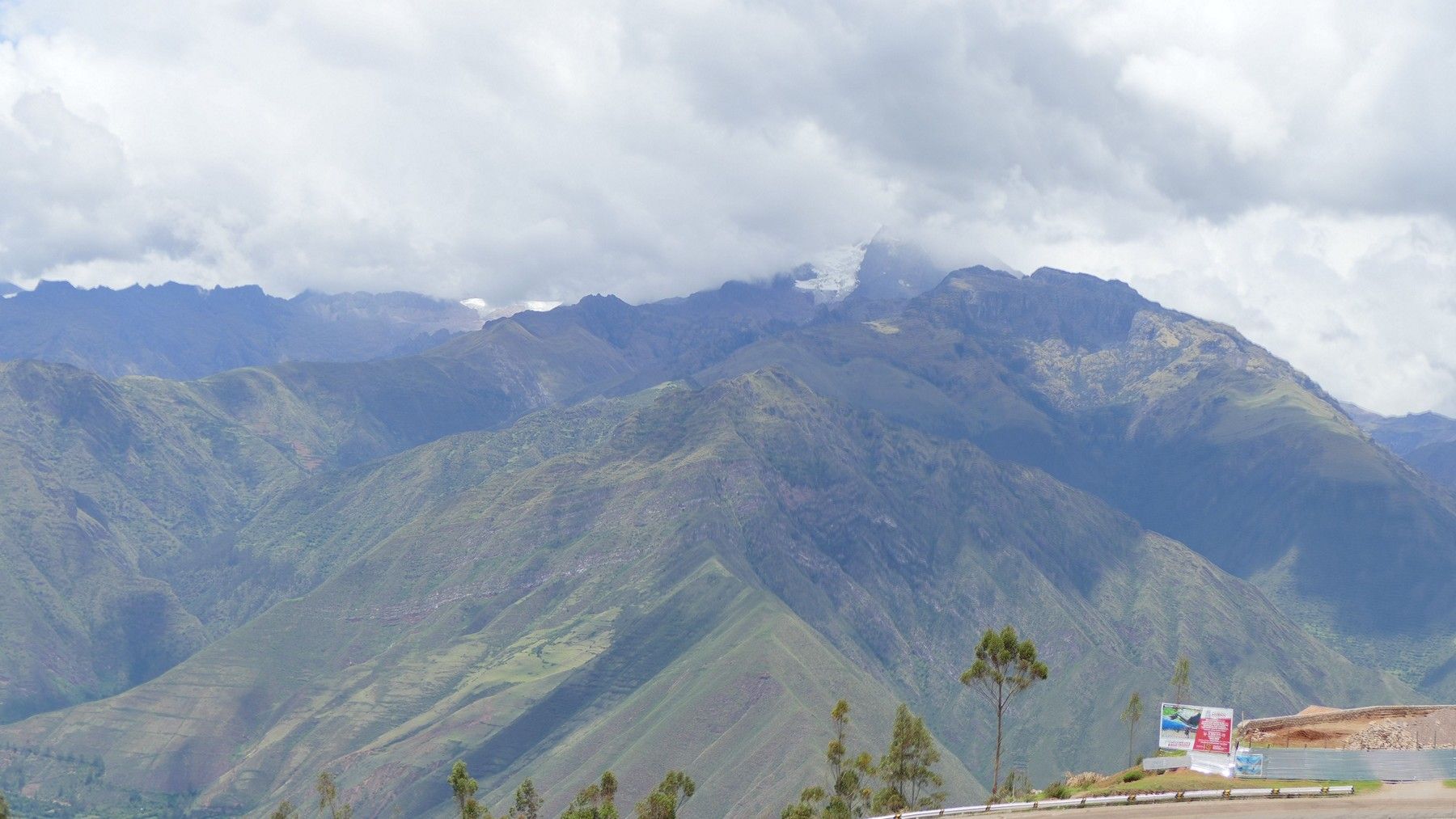

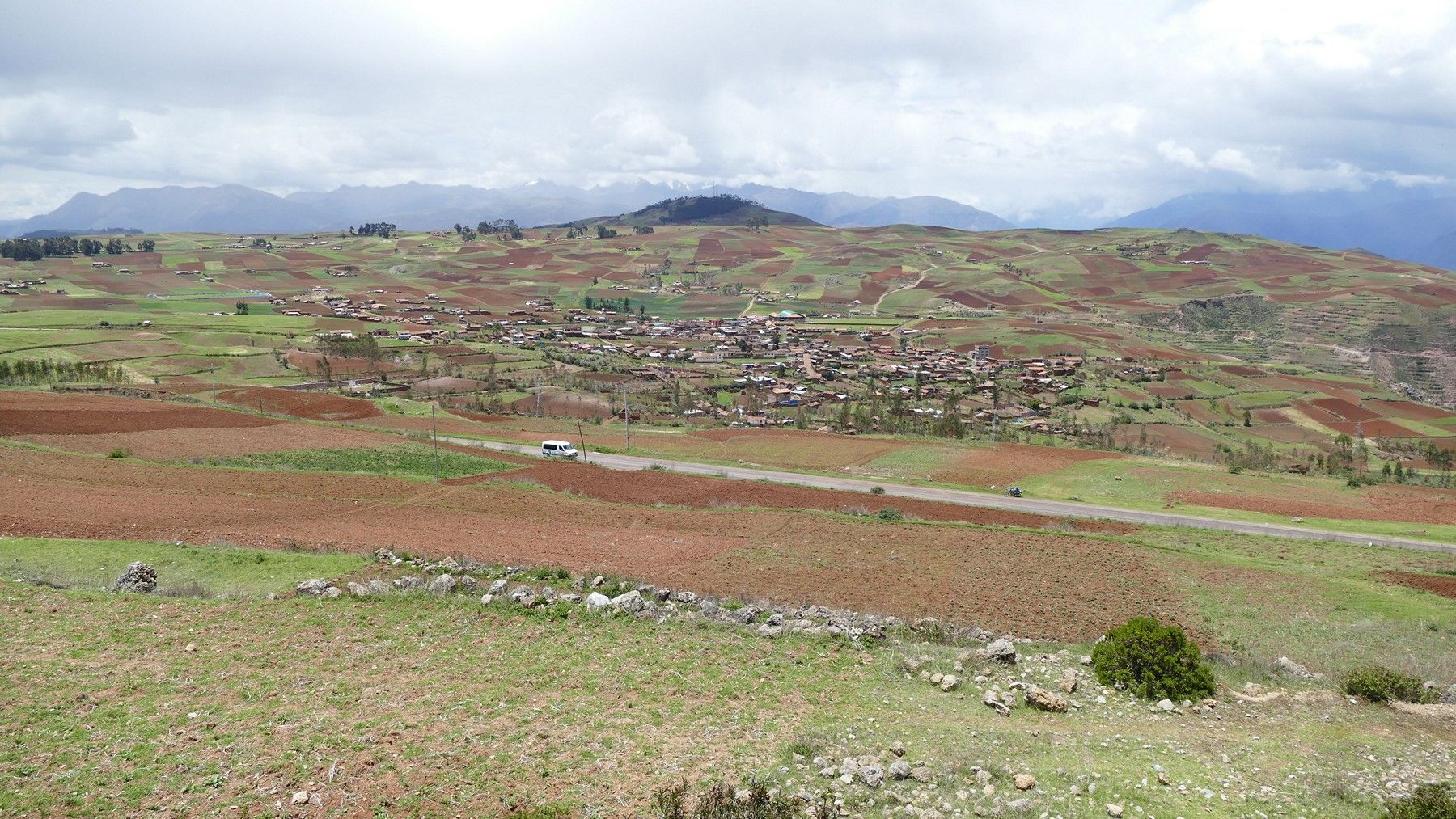
The attraction in Chinchero was a place where the local ladies continued the ancient ways of weaving alpaca and llama and guanaco fur into a variety of beautiful things.
We were given a demonstration of how it works but I didn't record the whole thing.
The gal below is somehow extracting a thread from a matted ball of fur, It's being wound onto a spindle.
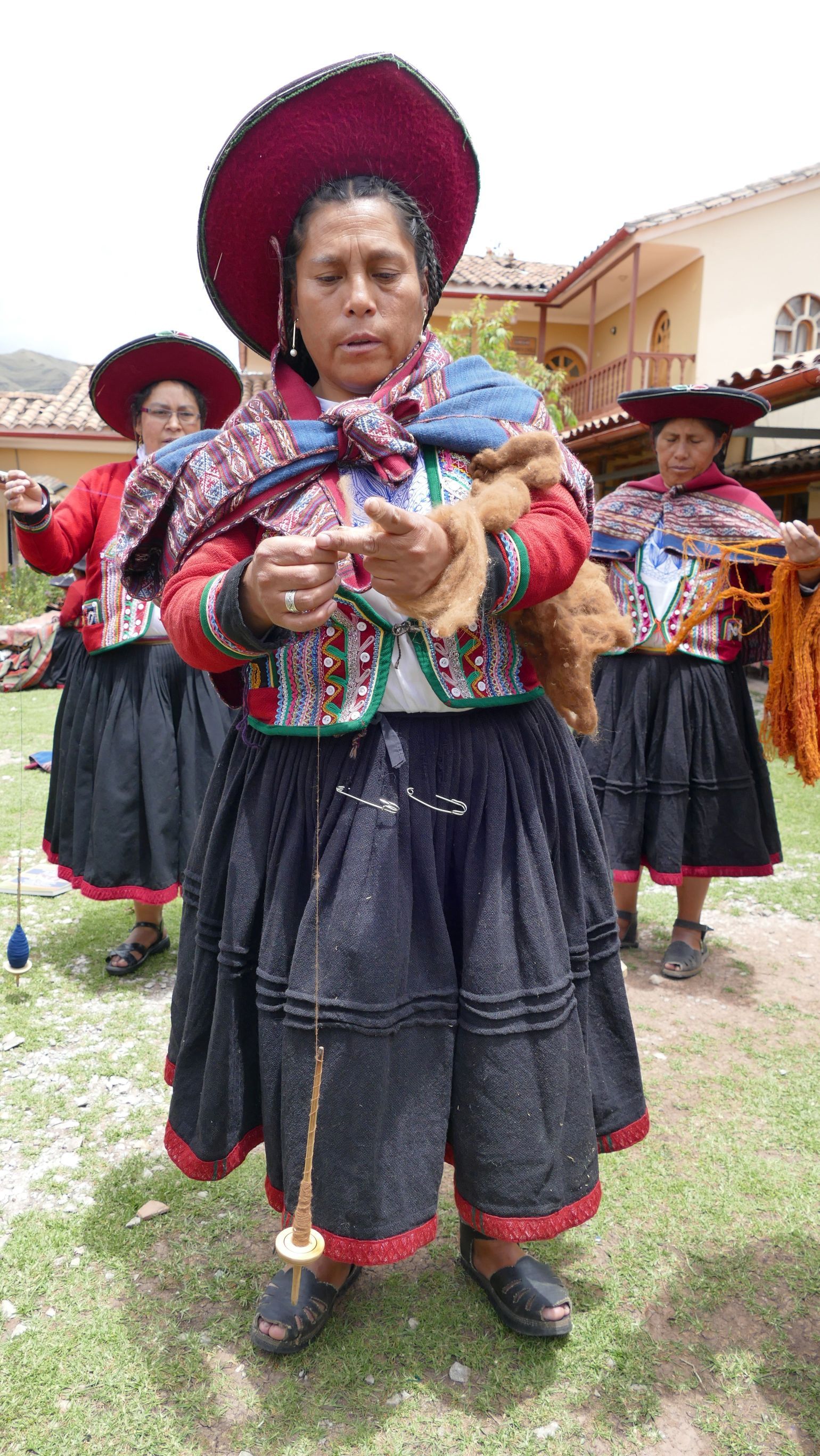
The material is washed and coloured. They explained how they get such a range of colours and I imagine it must have taken eons of trying different methods to finally come up with these colours.
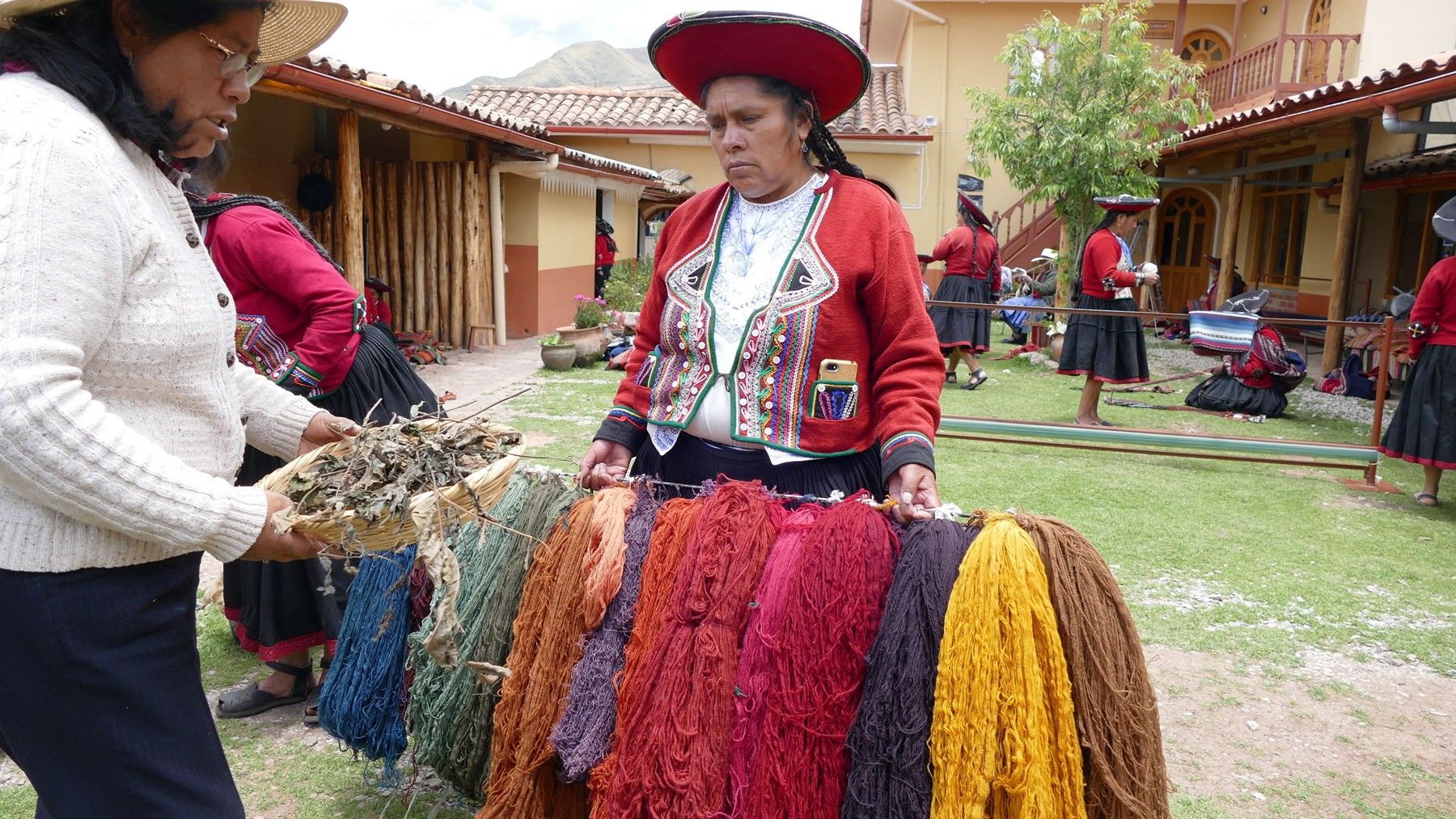
The gal in the white sweater and hat was the owner of the place.
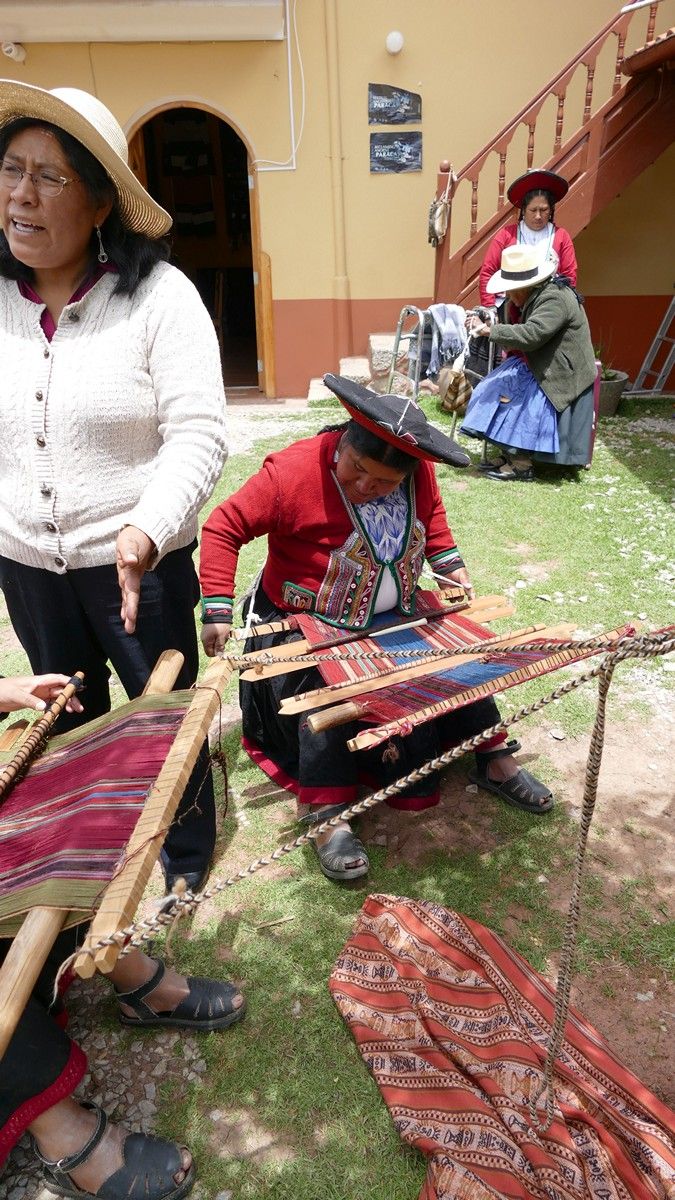
It;s quite a process to make a piece of cloth as shown below.

Even something as simple as a belt or scarf or whatever it is takes a lot of work.
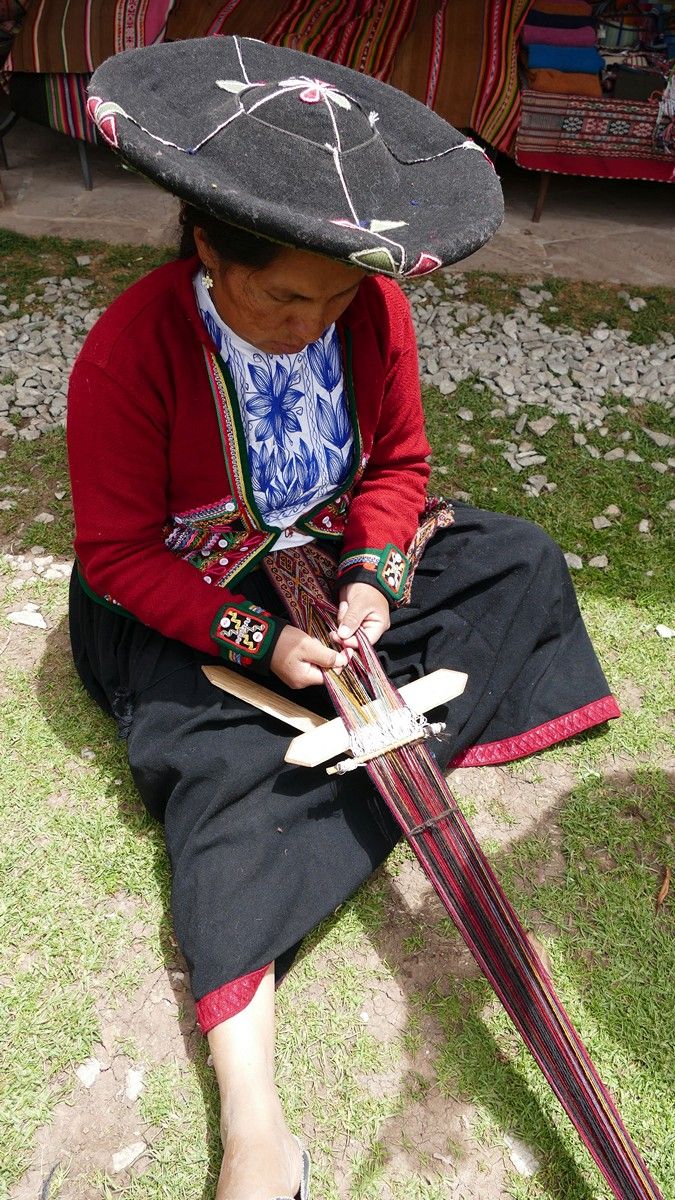
As usual with these places Terri felt the need to buy something so we now have a new table cloth.
The last stop of the day was at a very nice private home that now offers meals to tourist groups such as ours. It was not a restaurant in the conventional sense as there wa no sign on the road pointing to it an it was about 5 miles of single lane track to get to it - totally out if site.
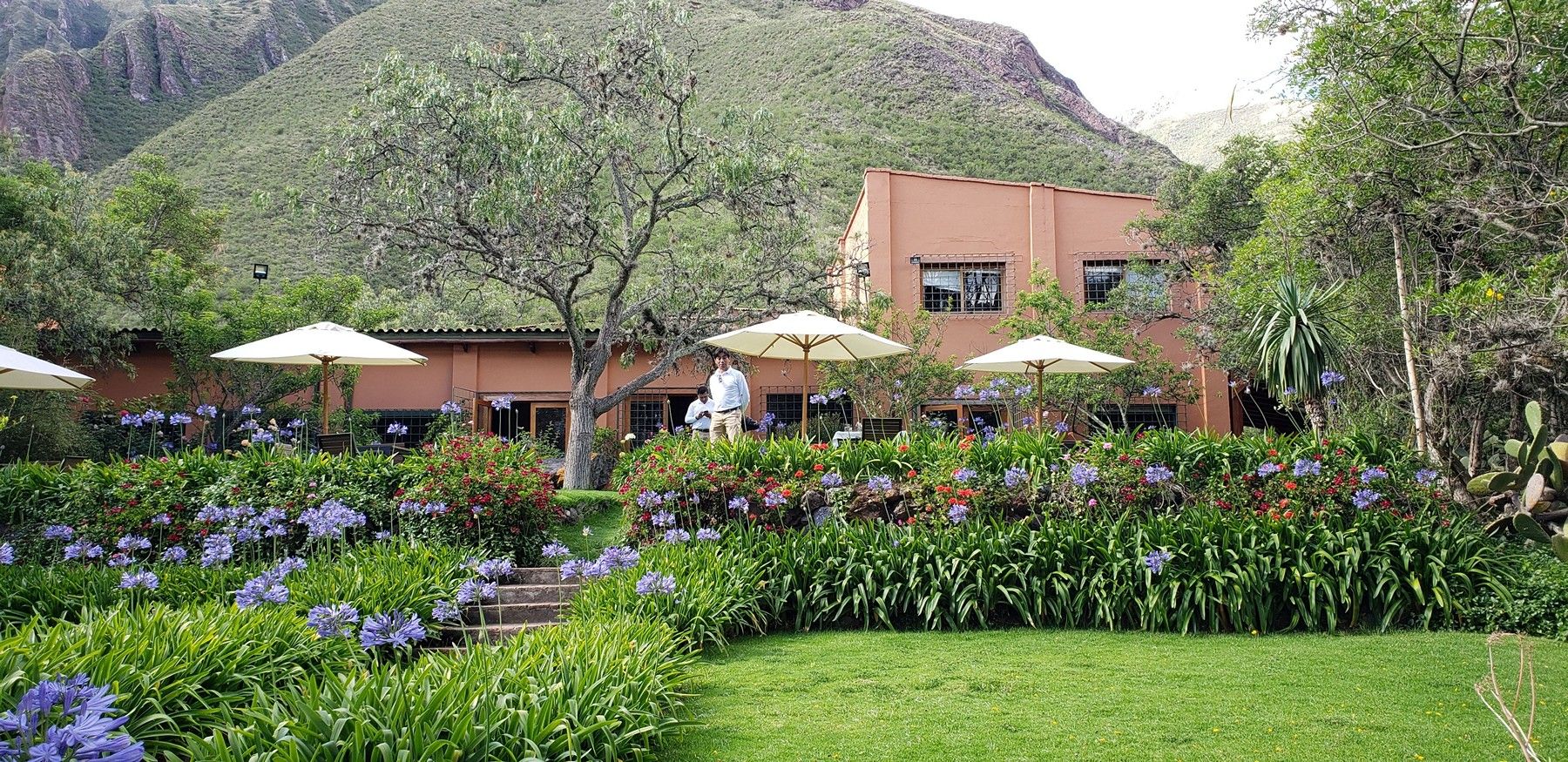
That was the end of our two days in the Sacred Valley.
If we ever went again, which we won't, I'd spend another day or two exploring the Sacred Valley and have only one day in Cusco.